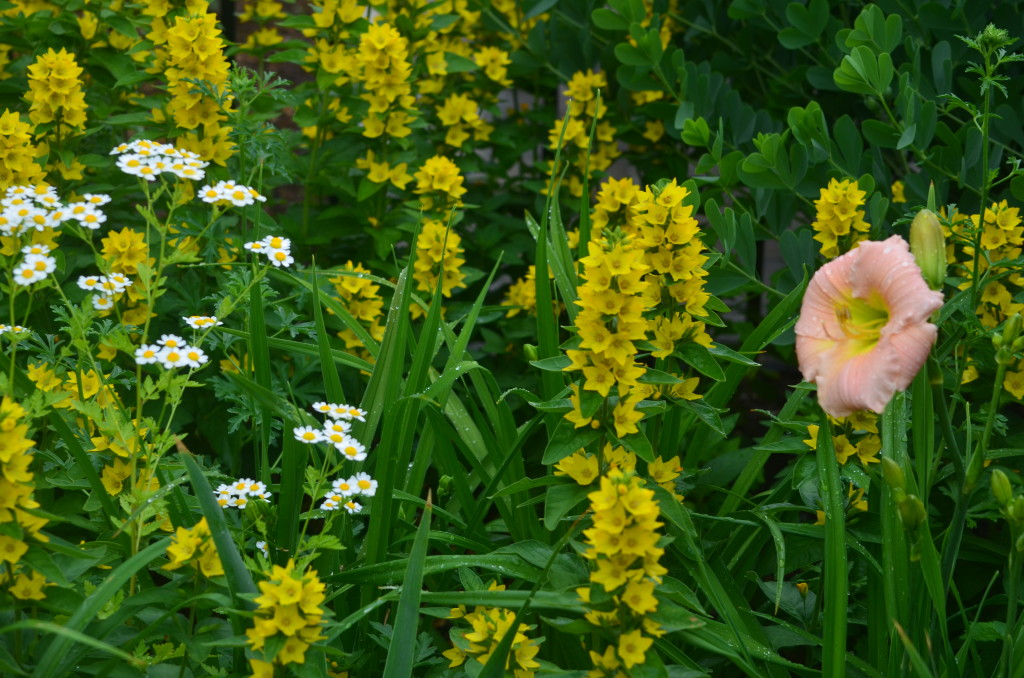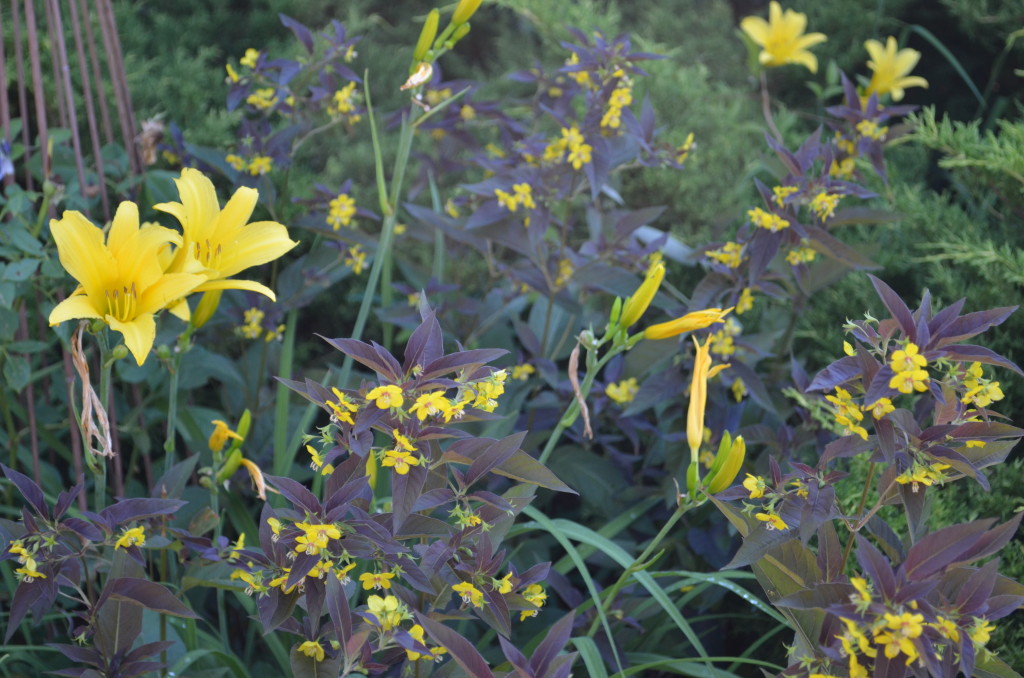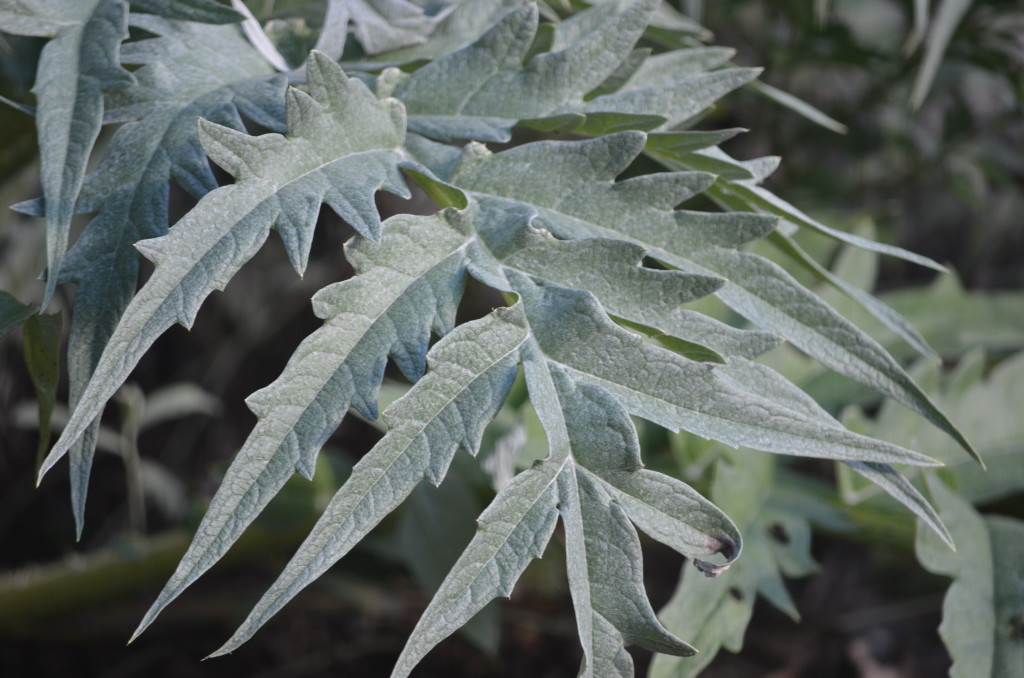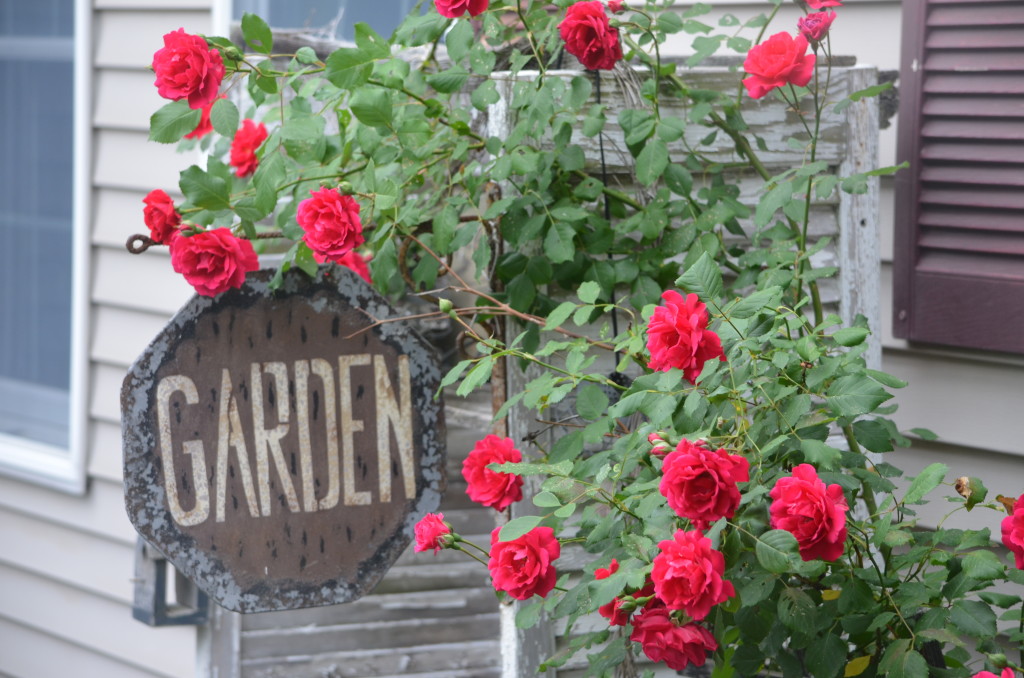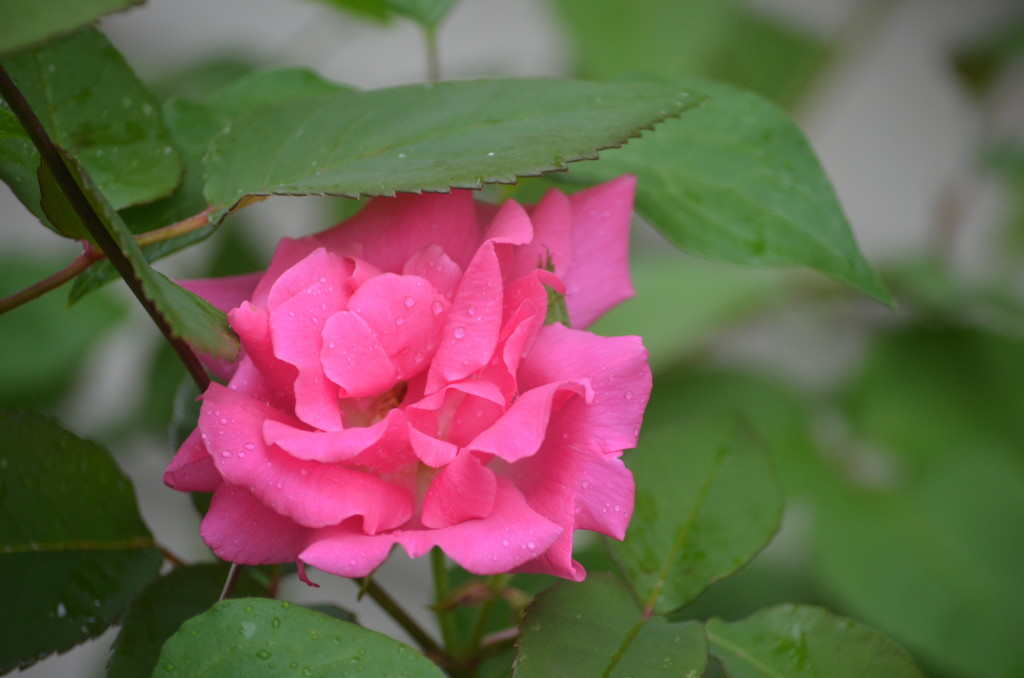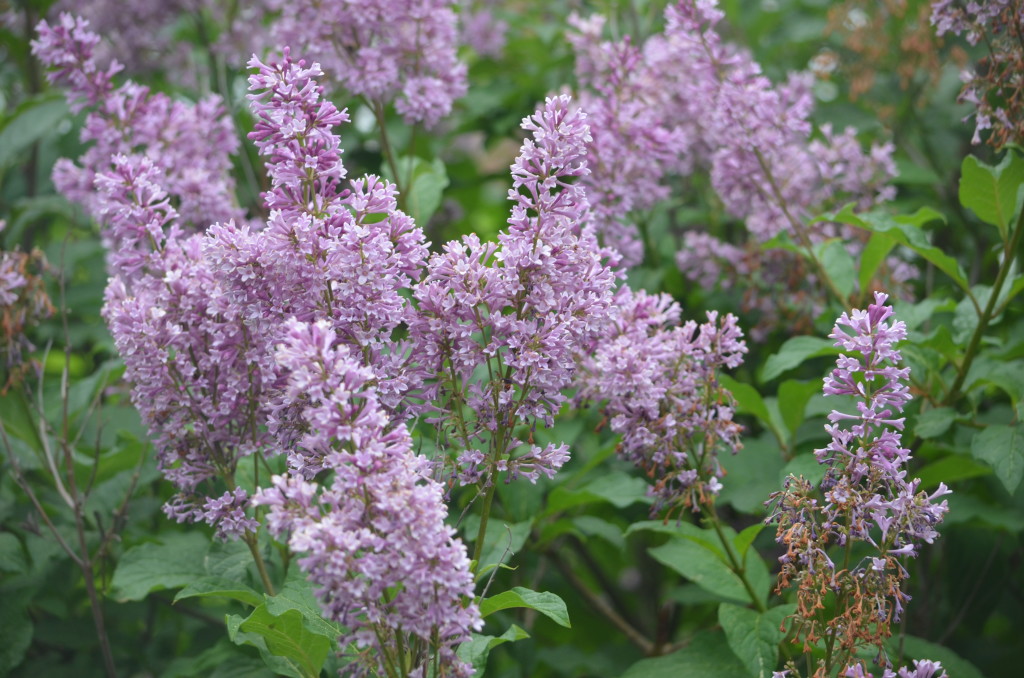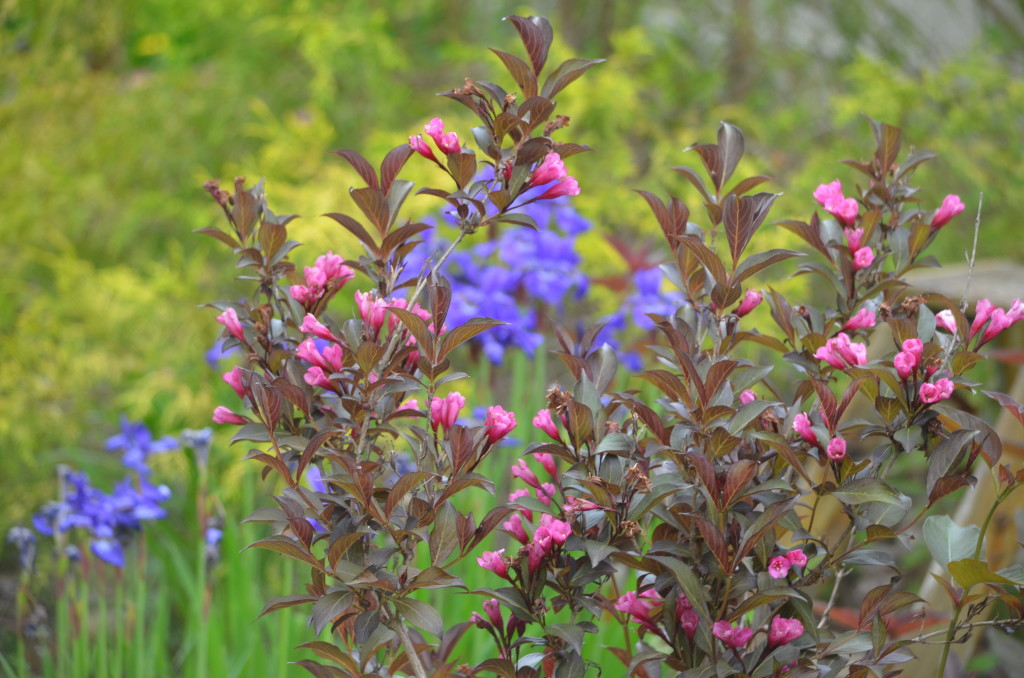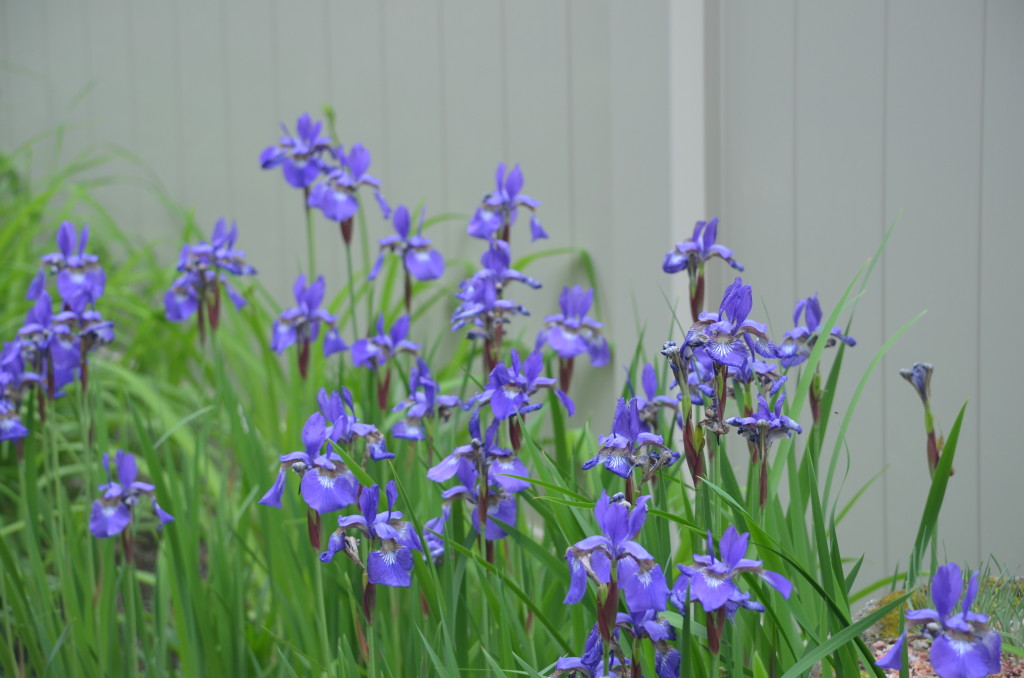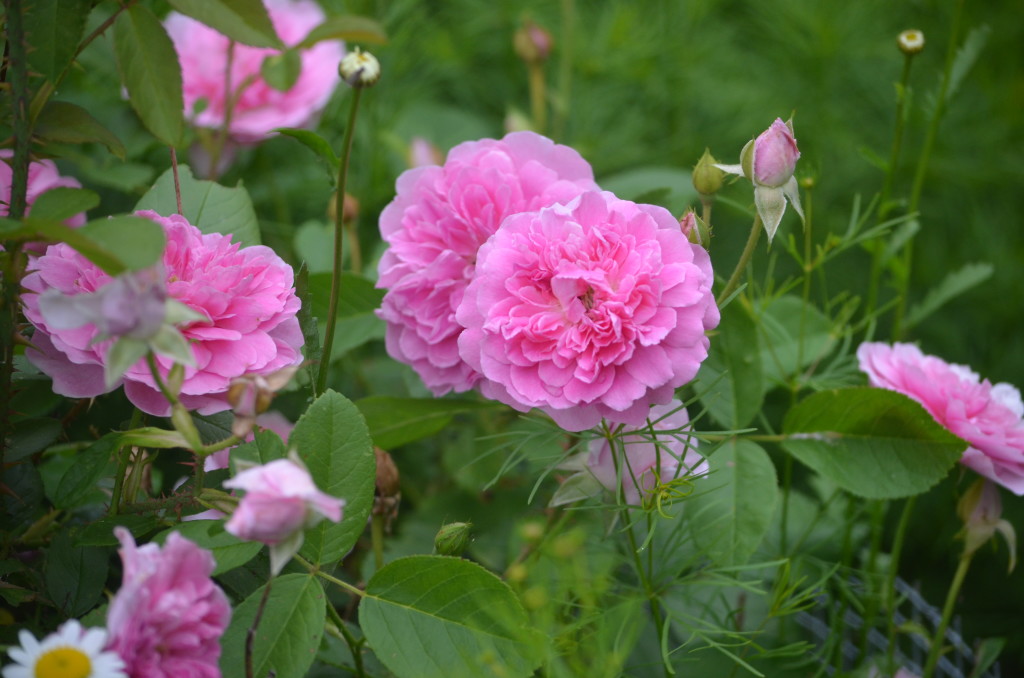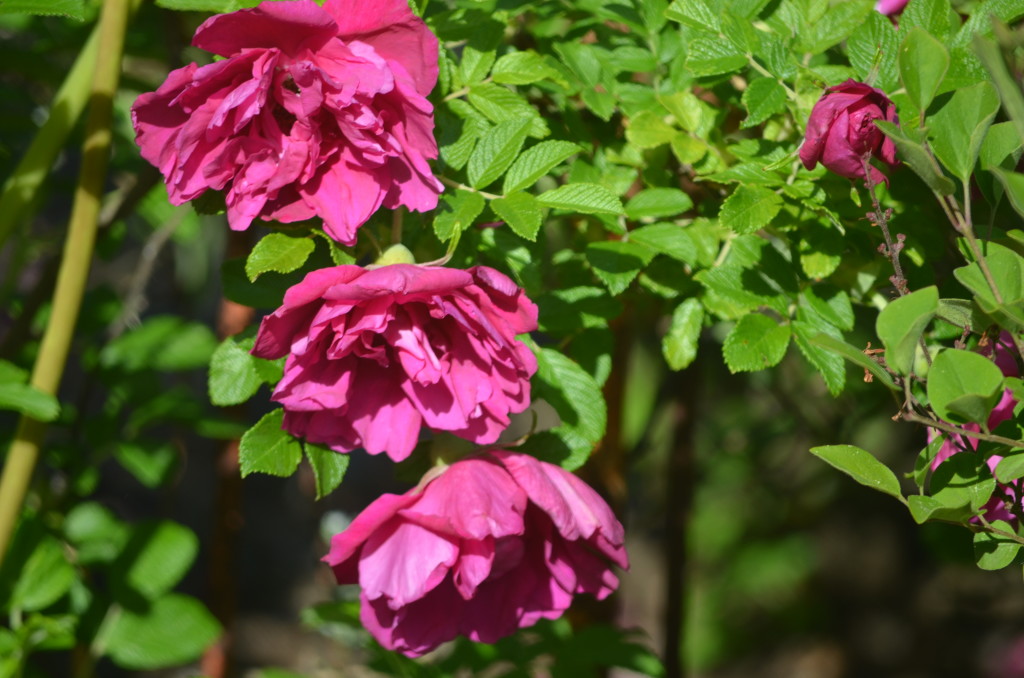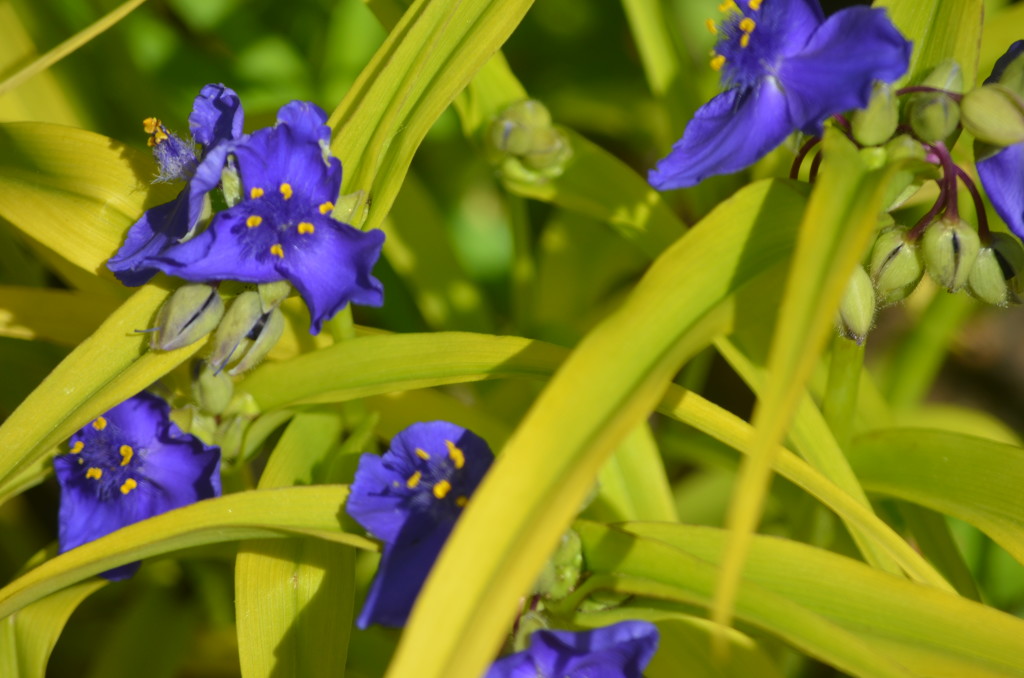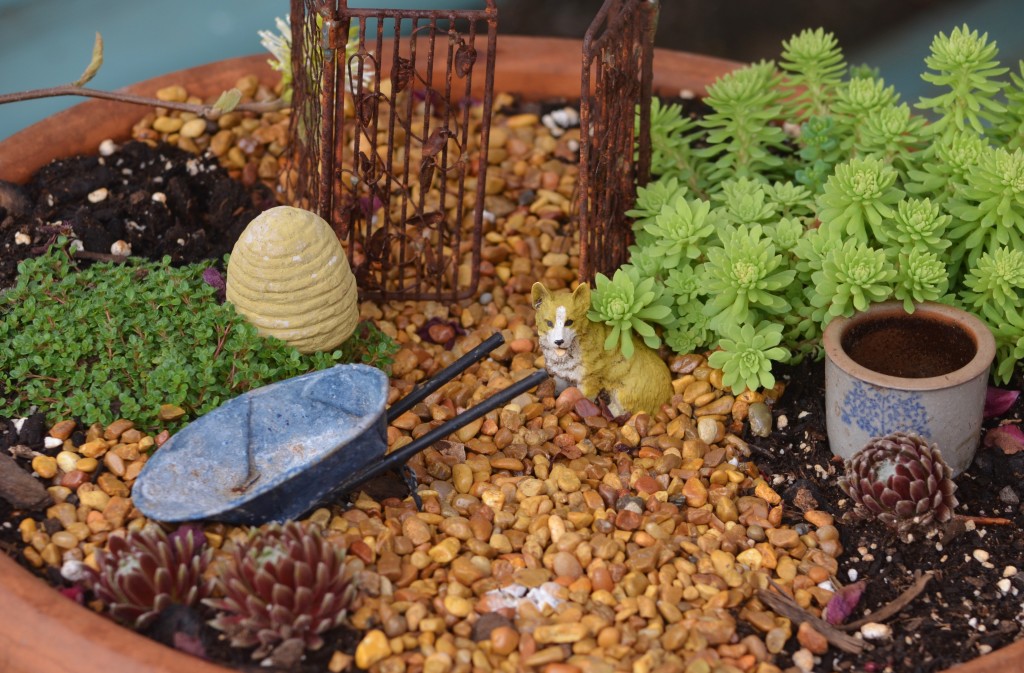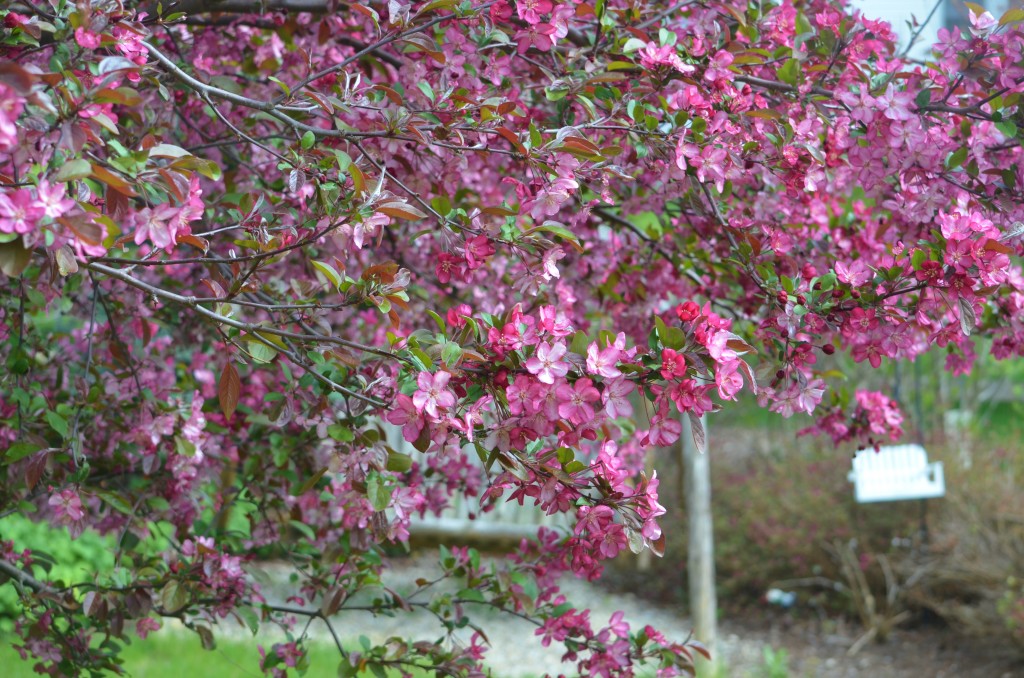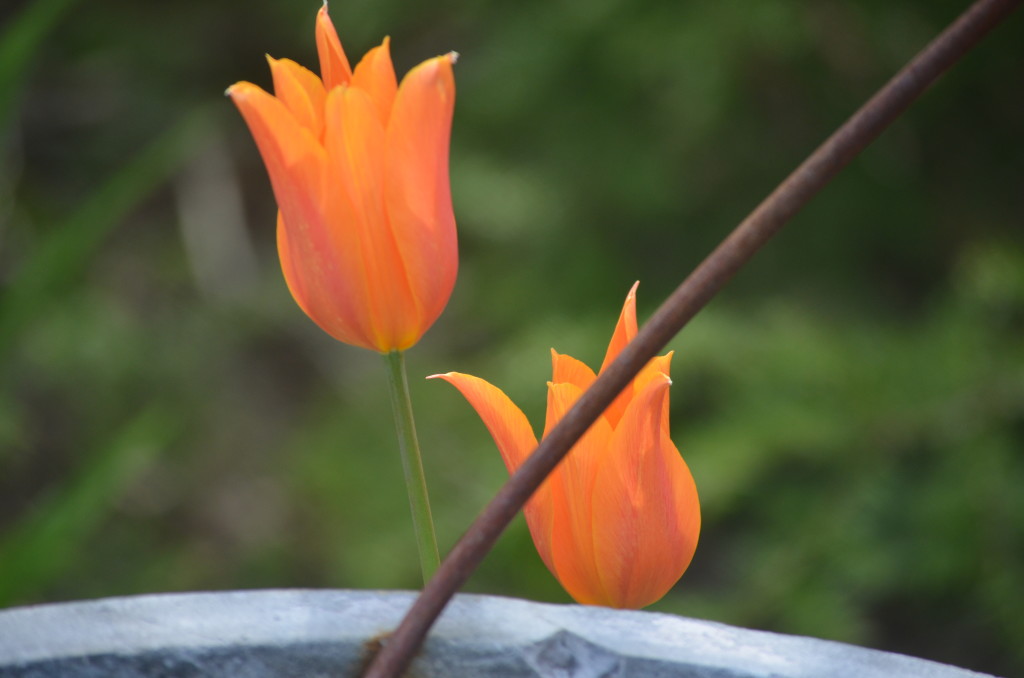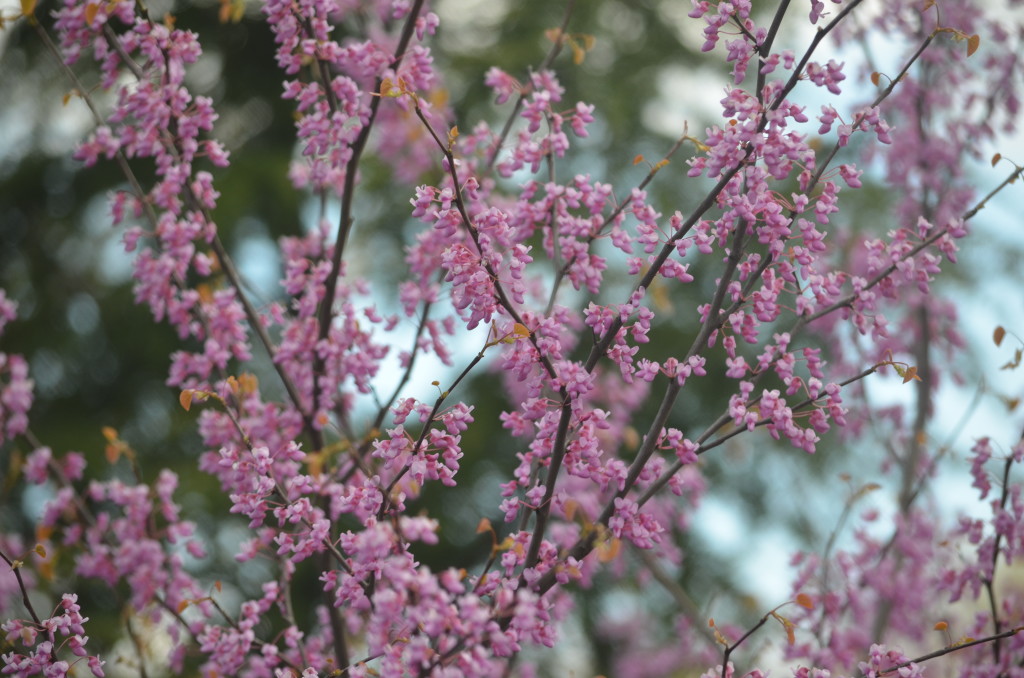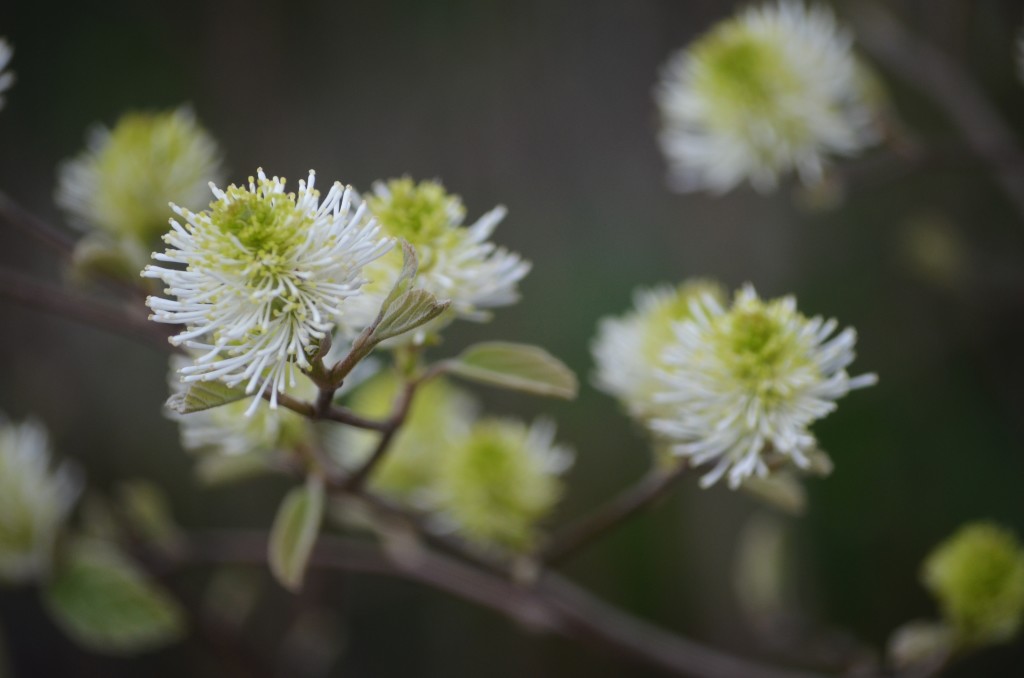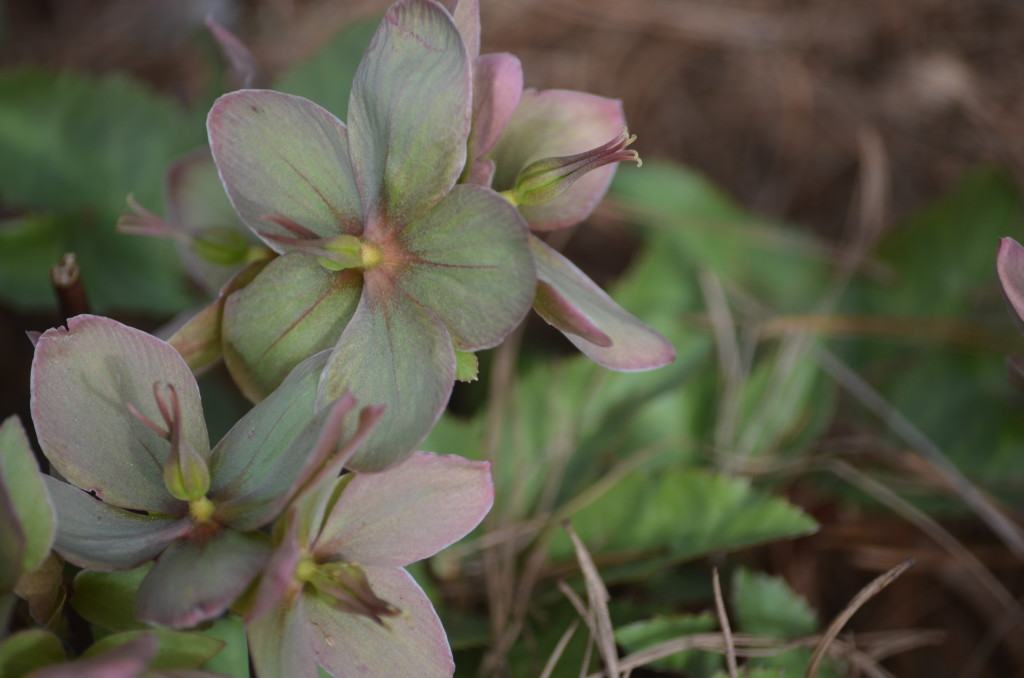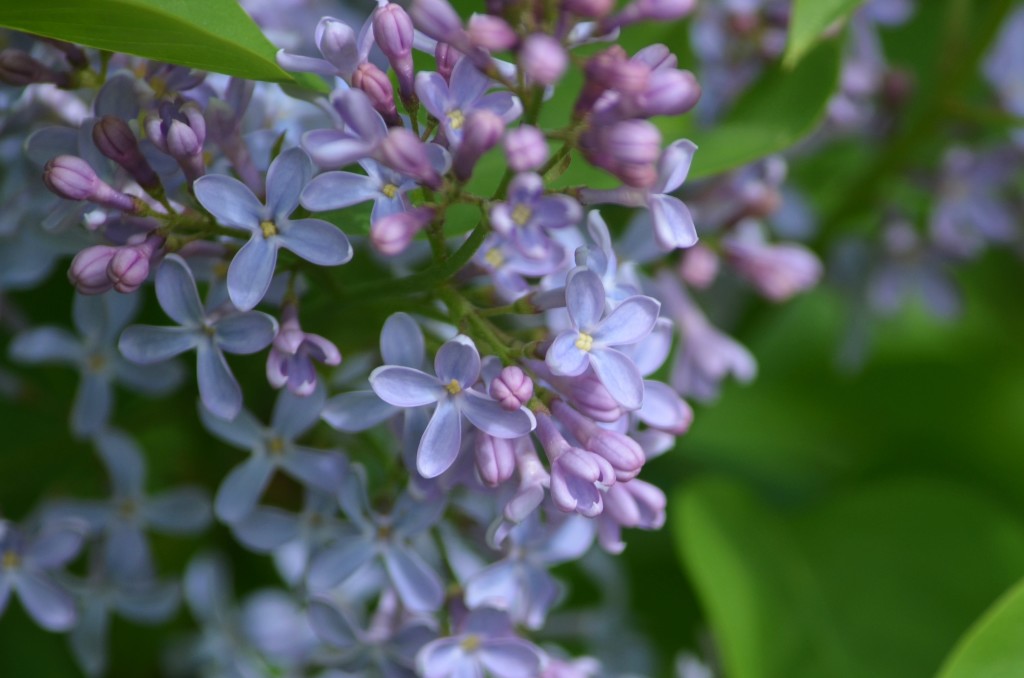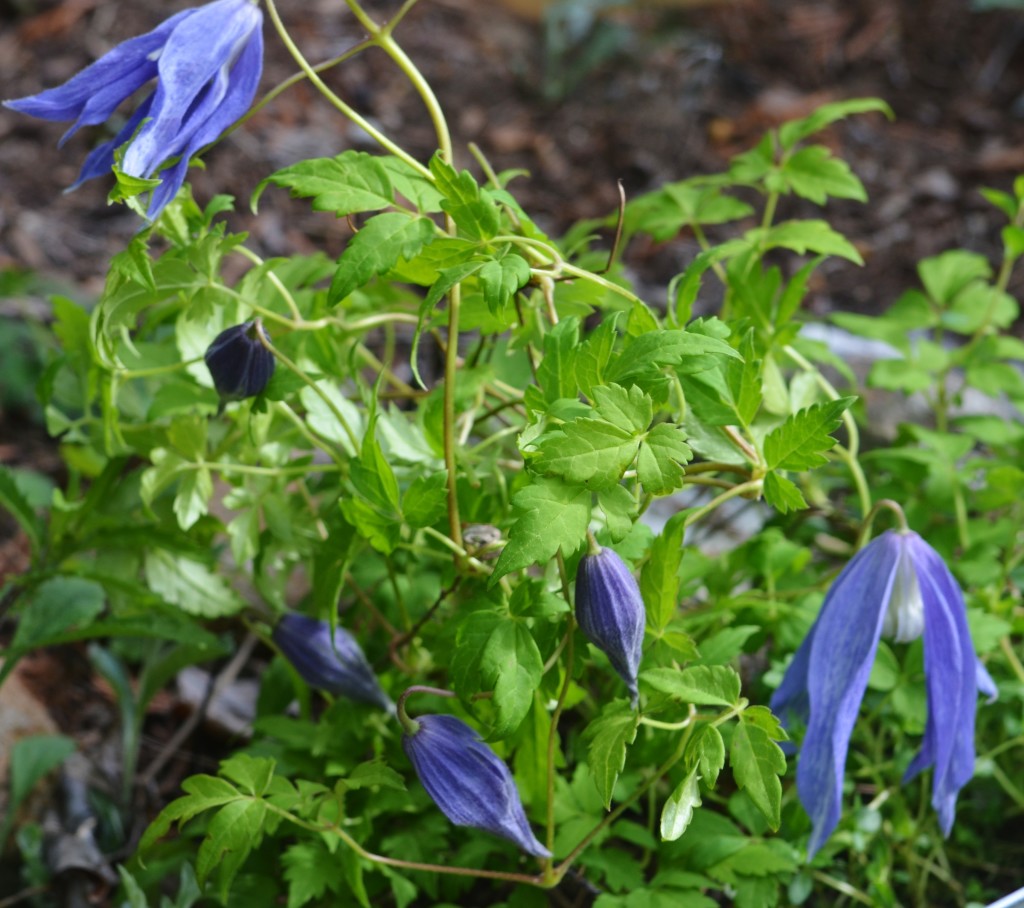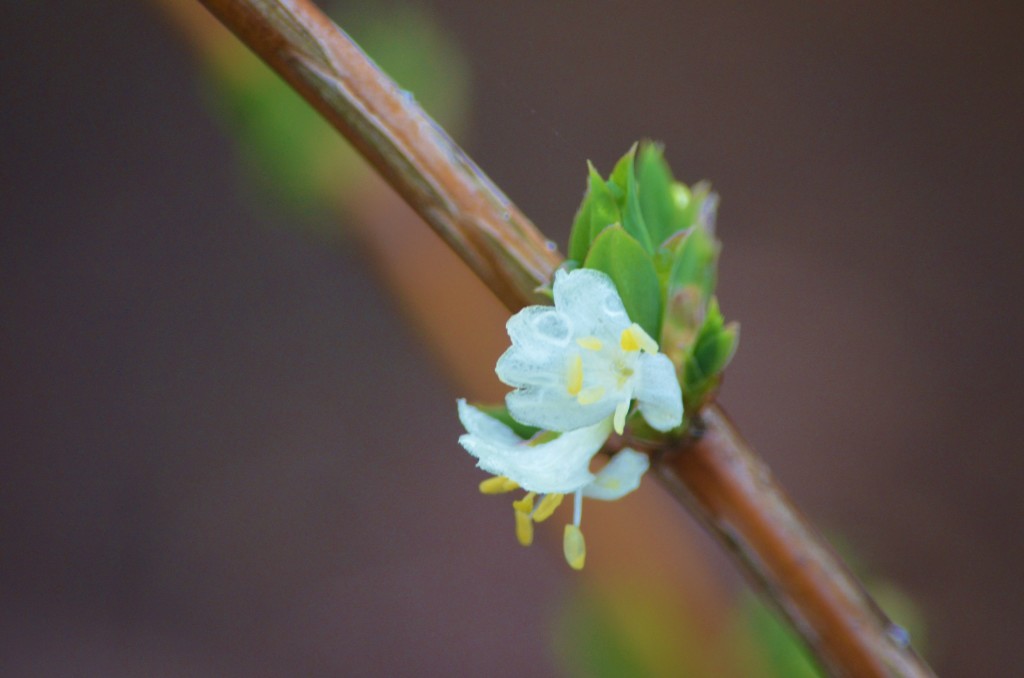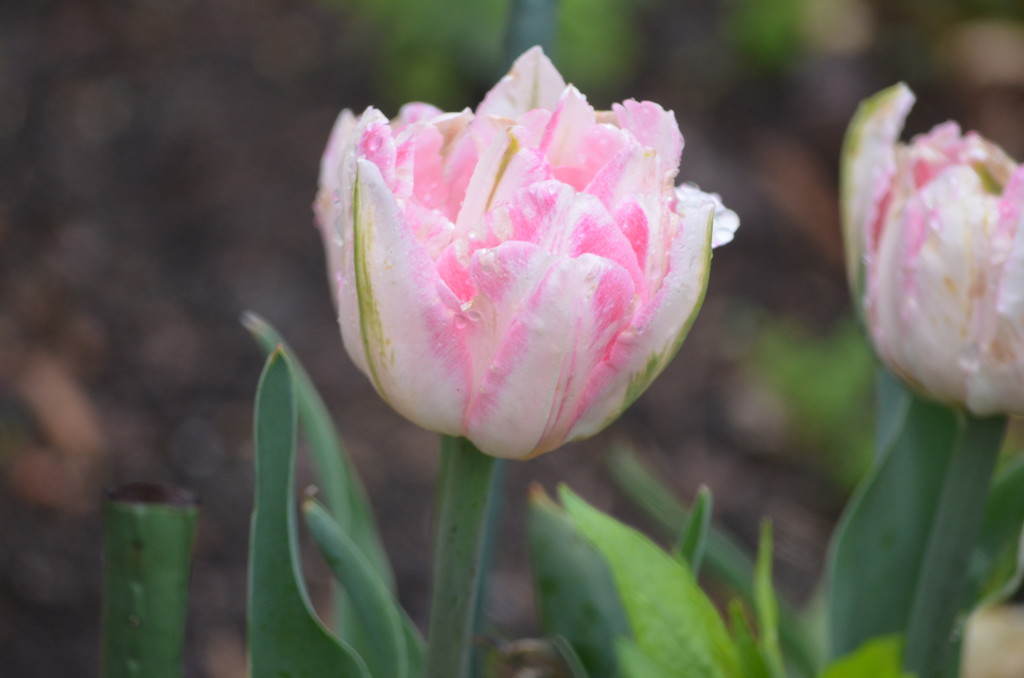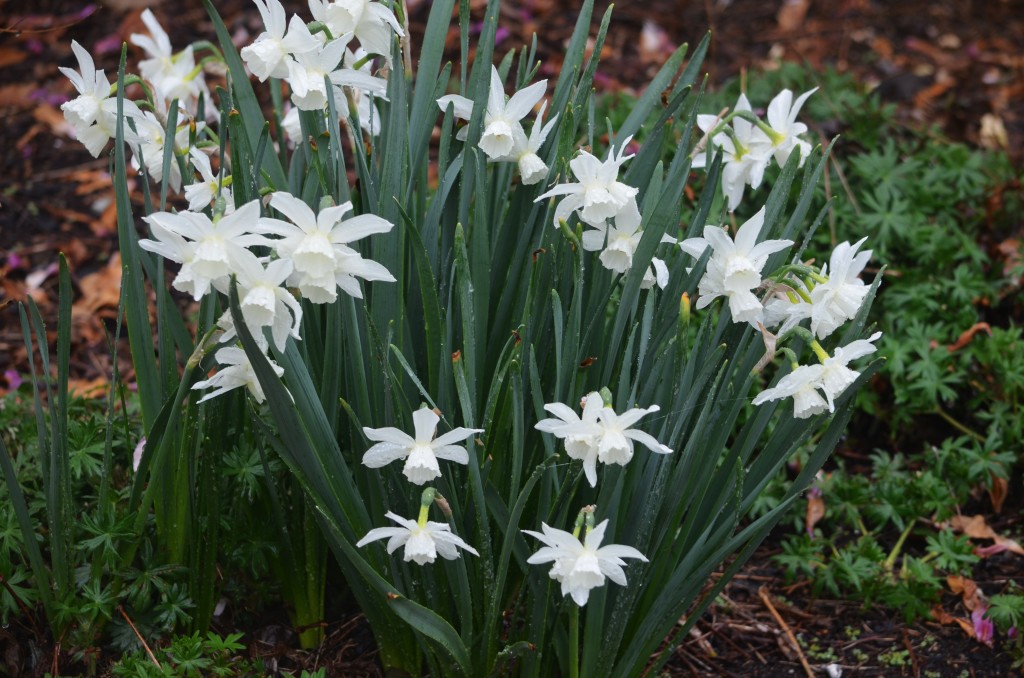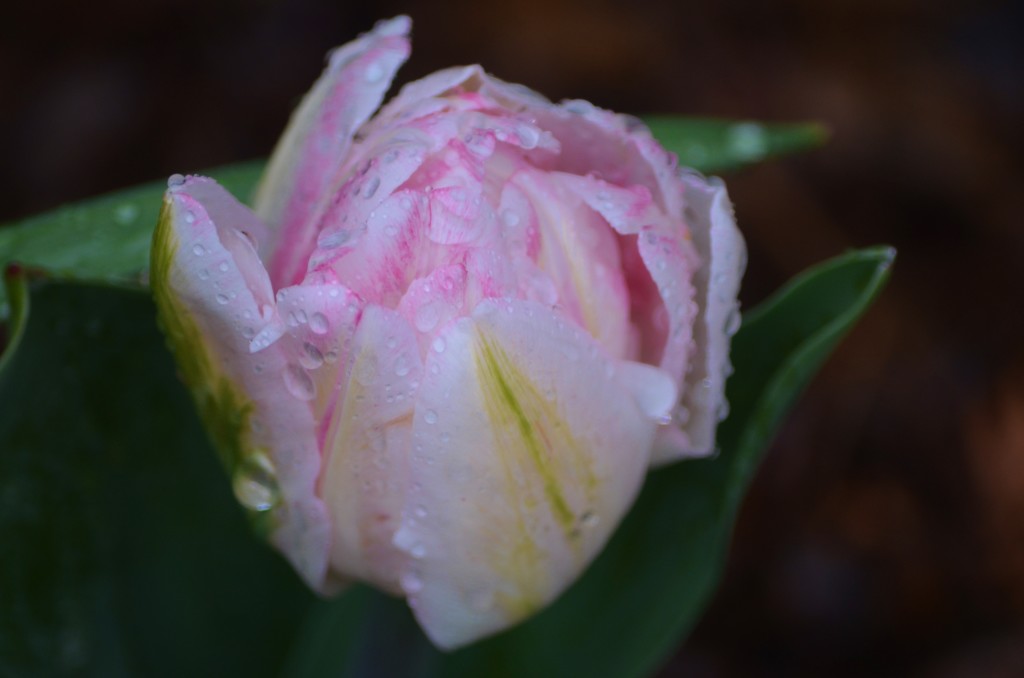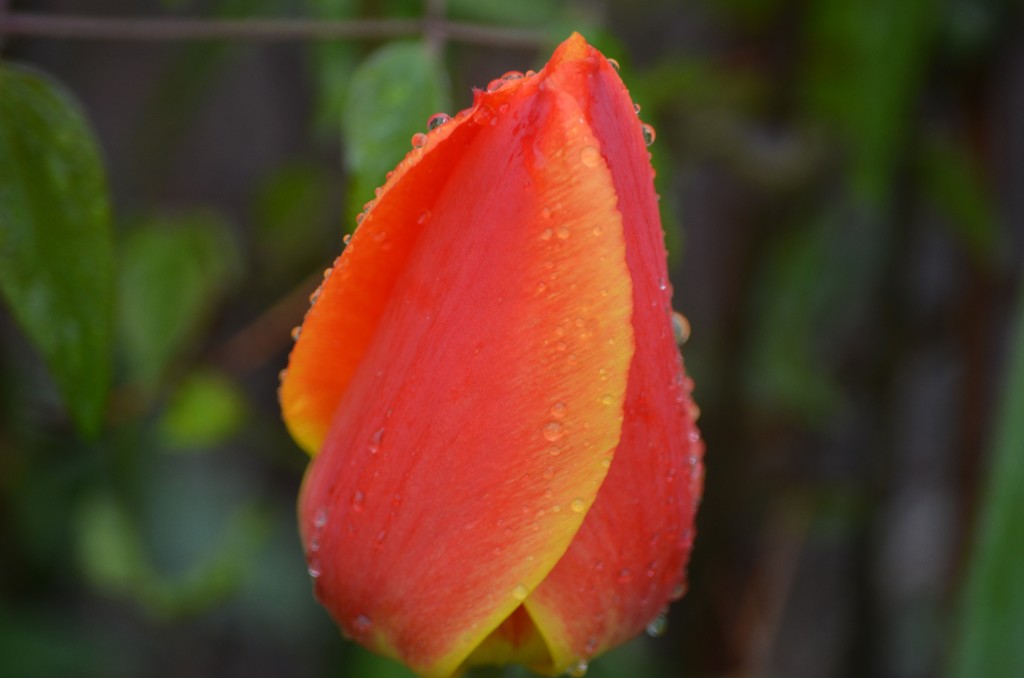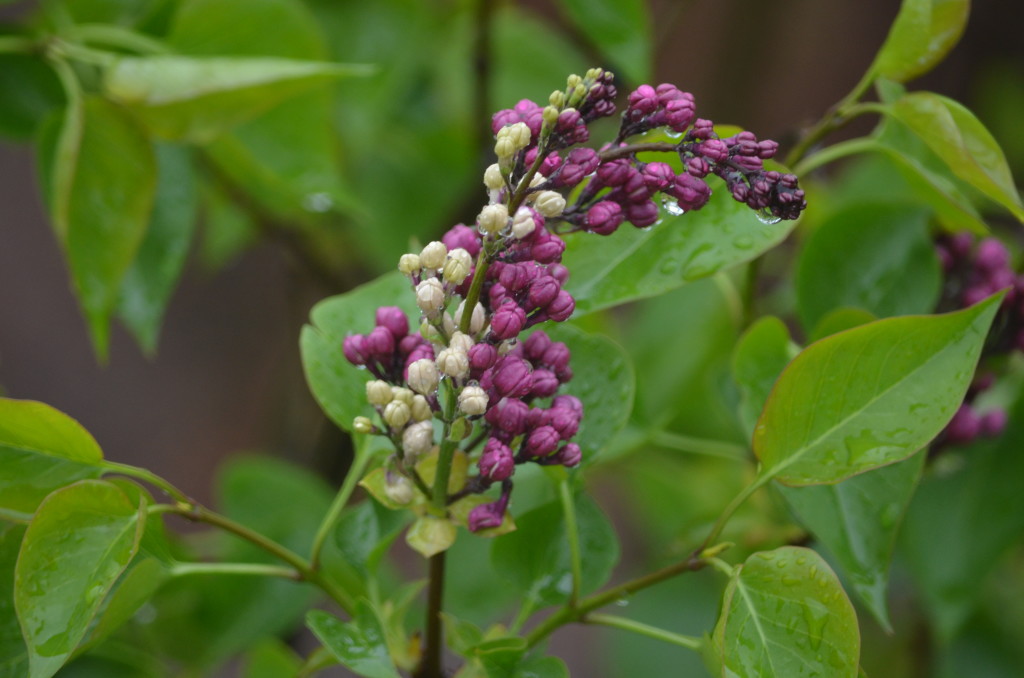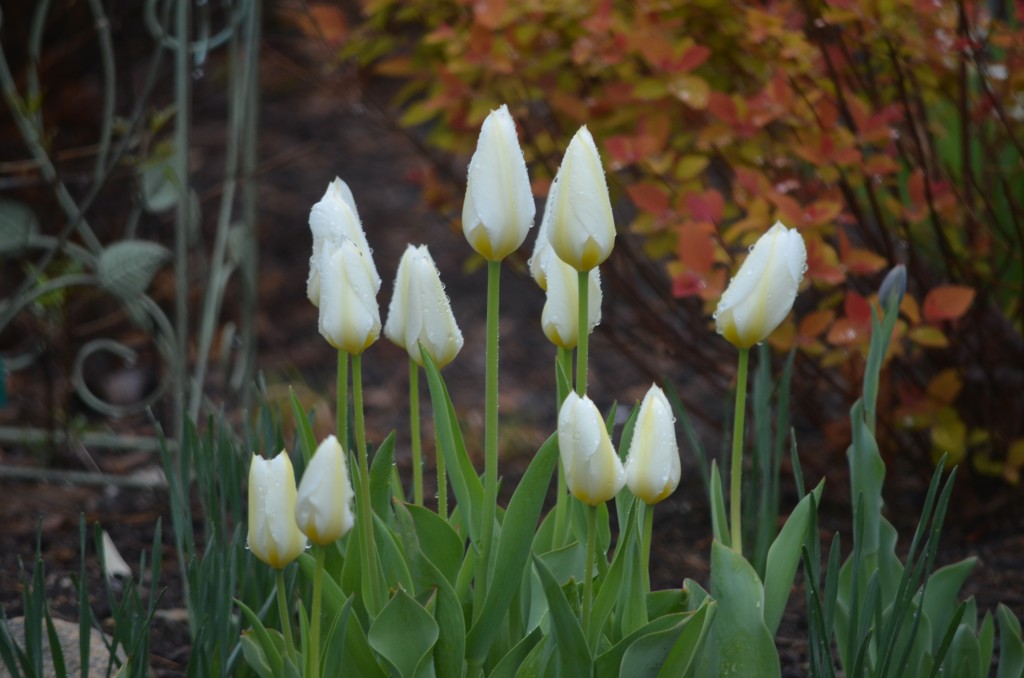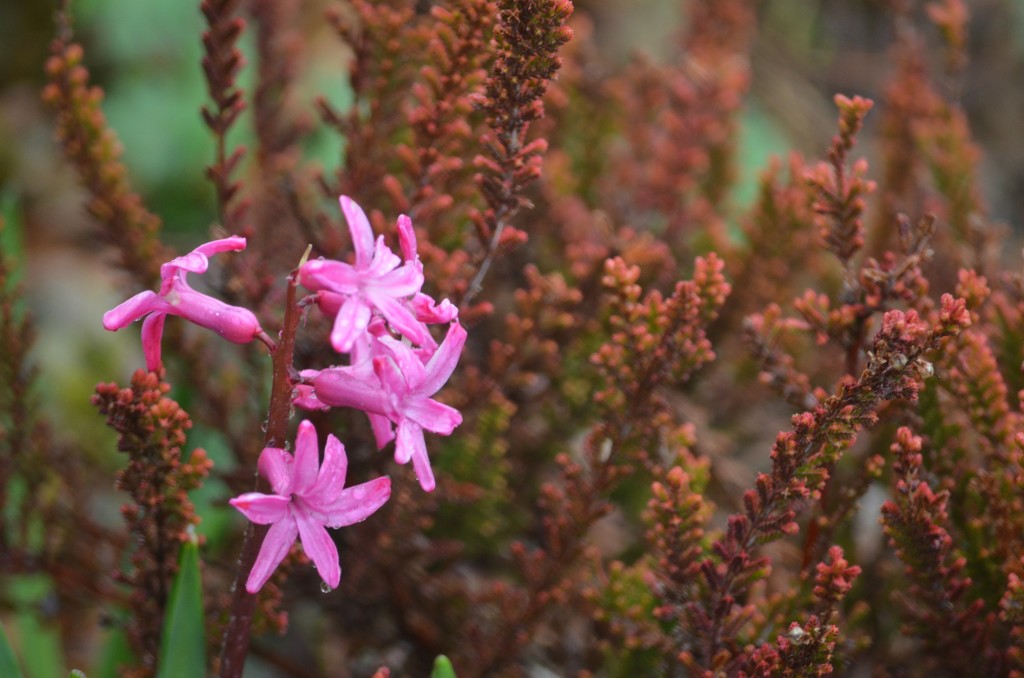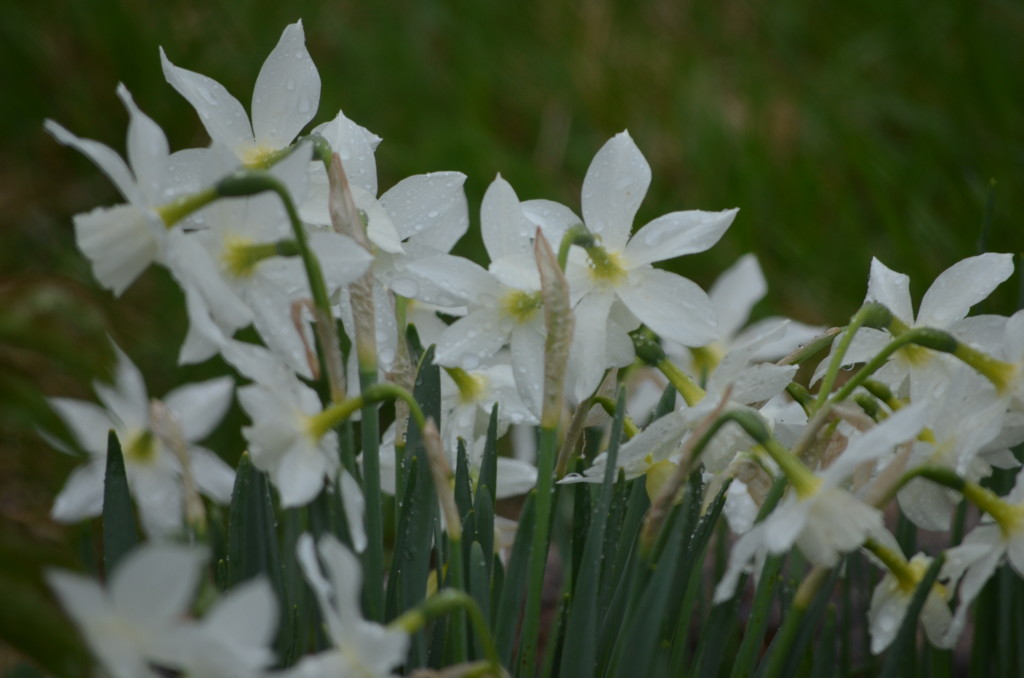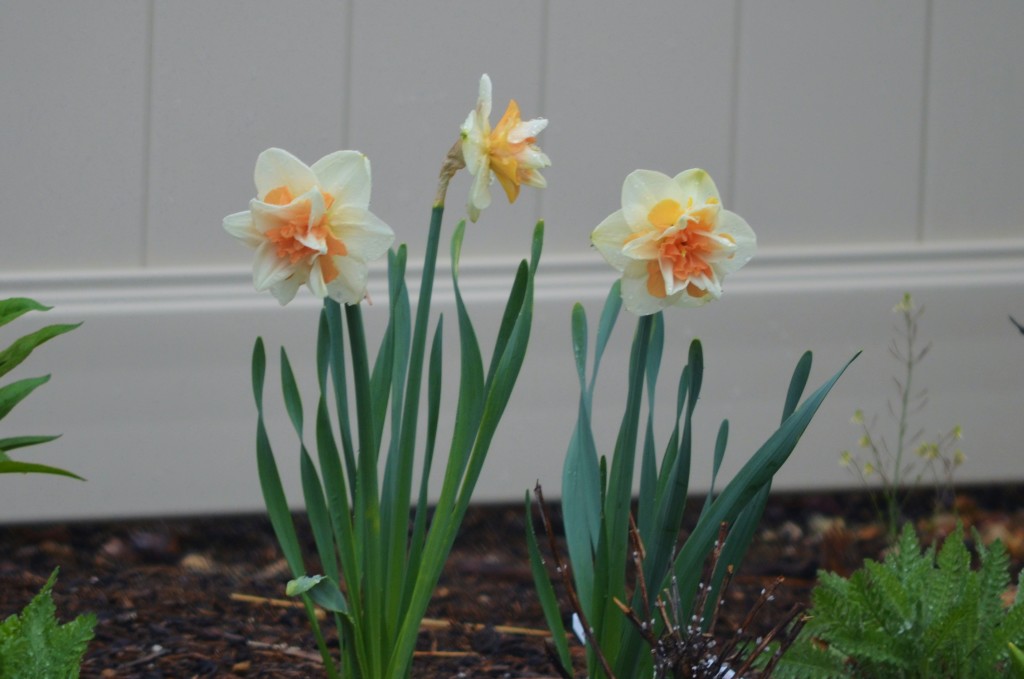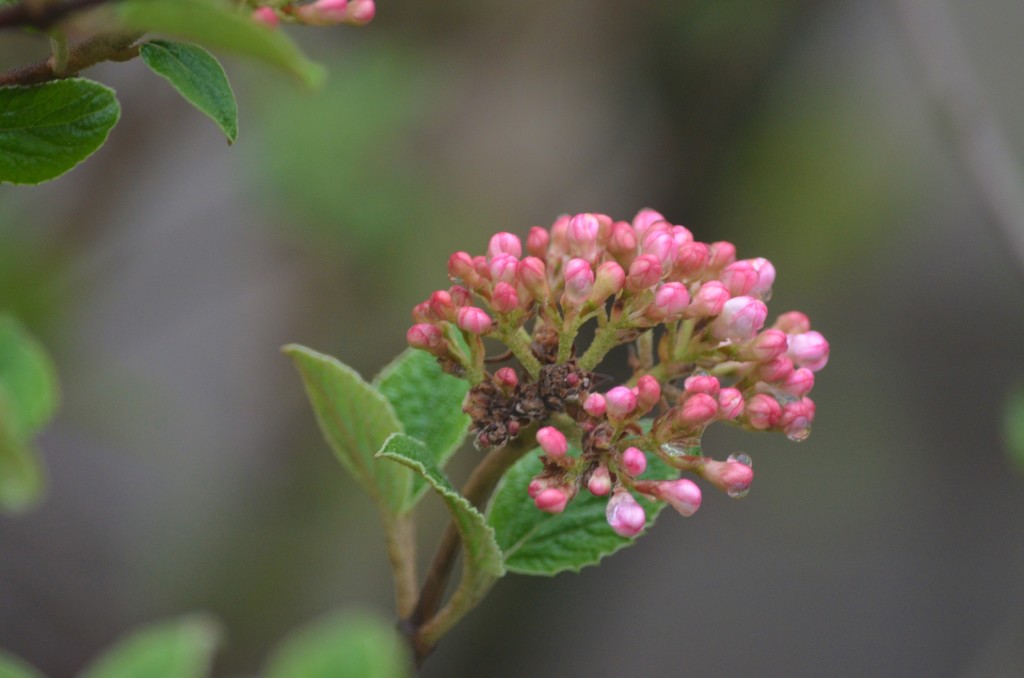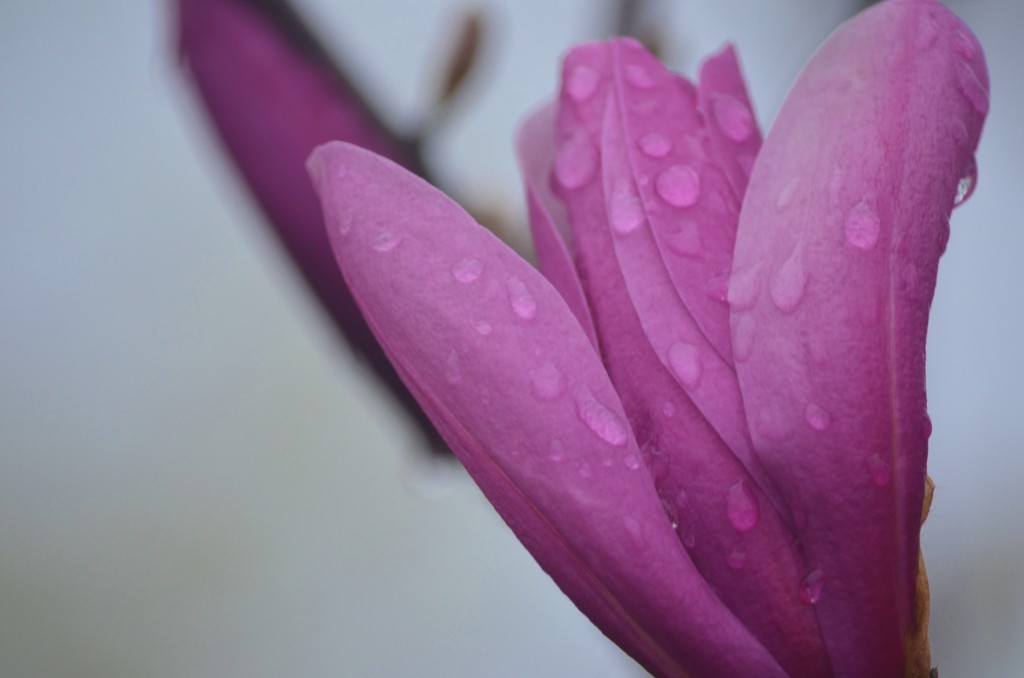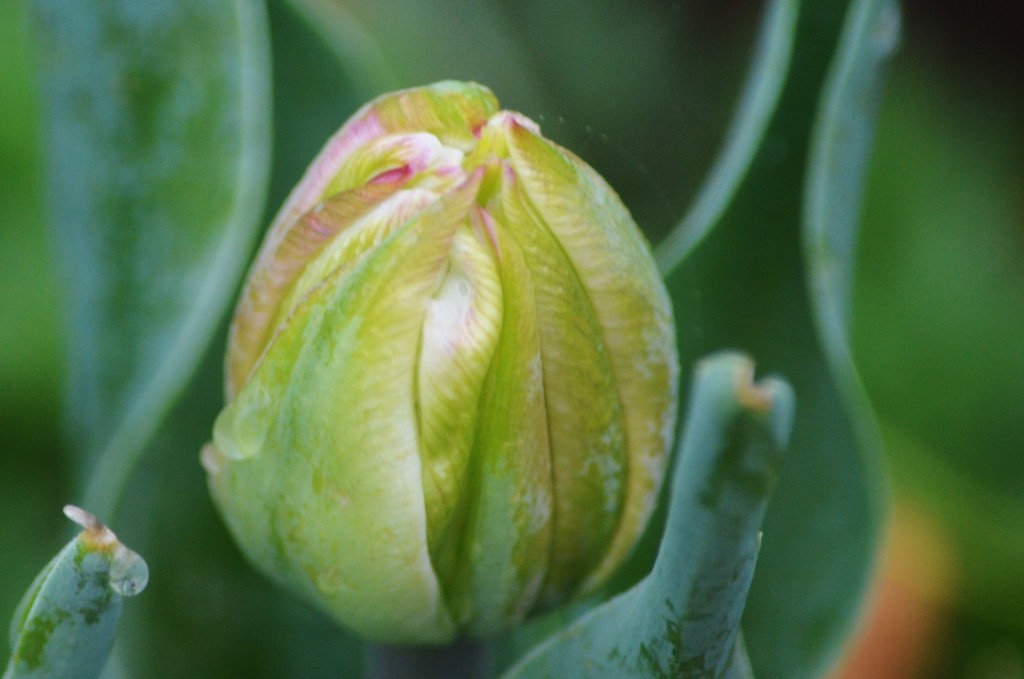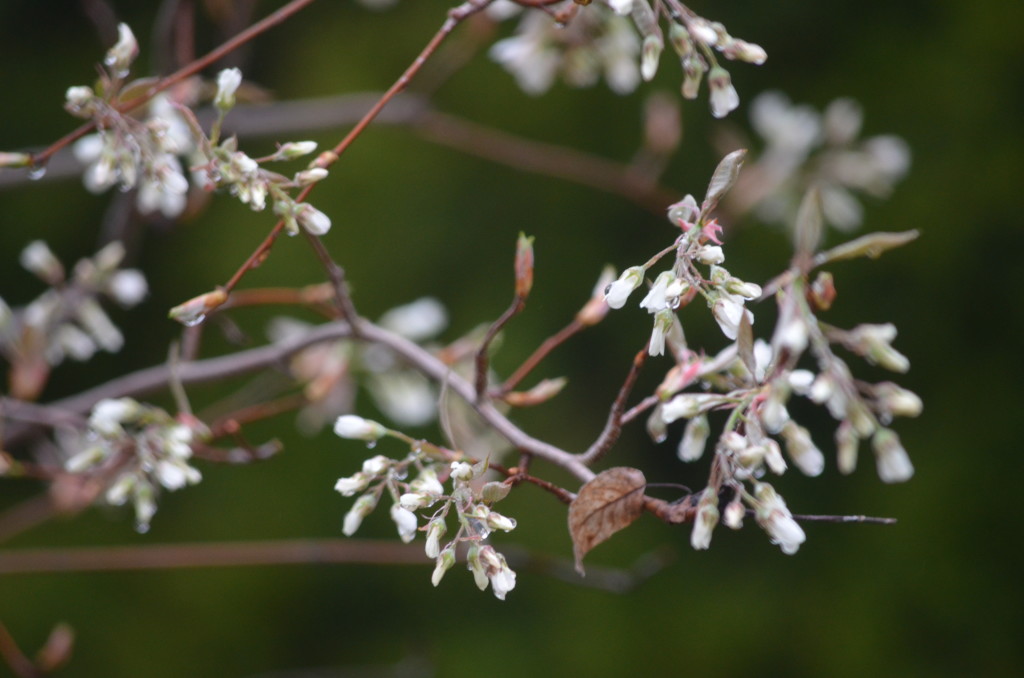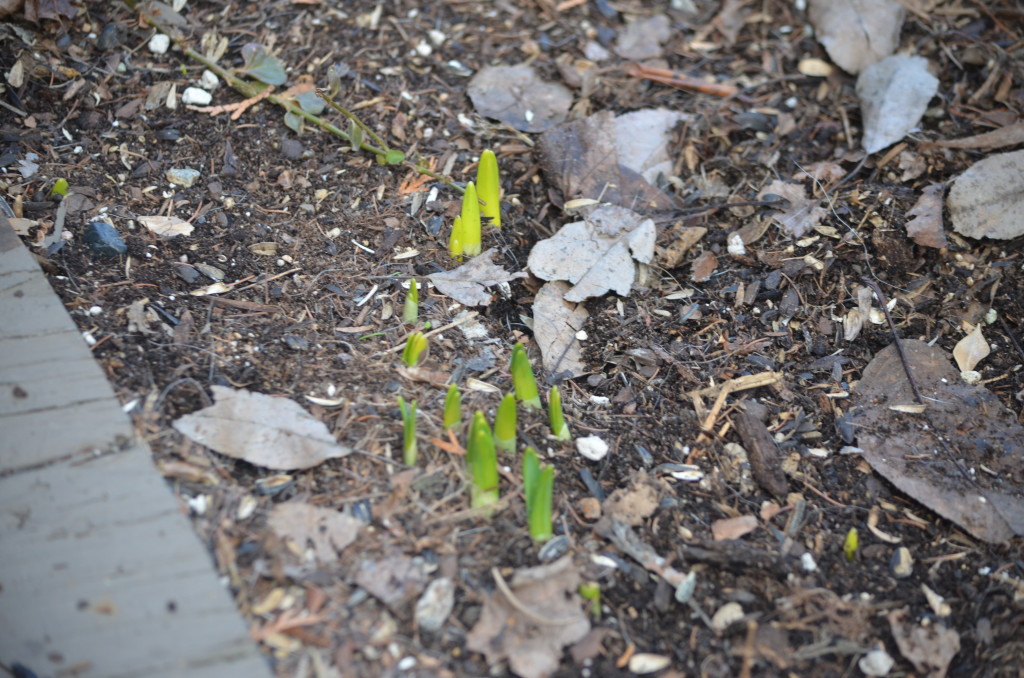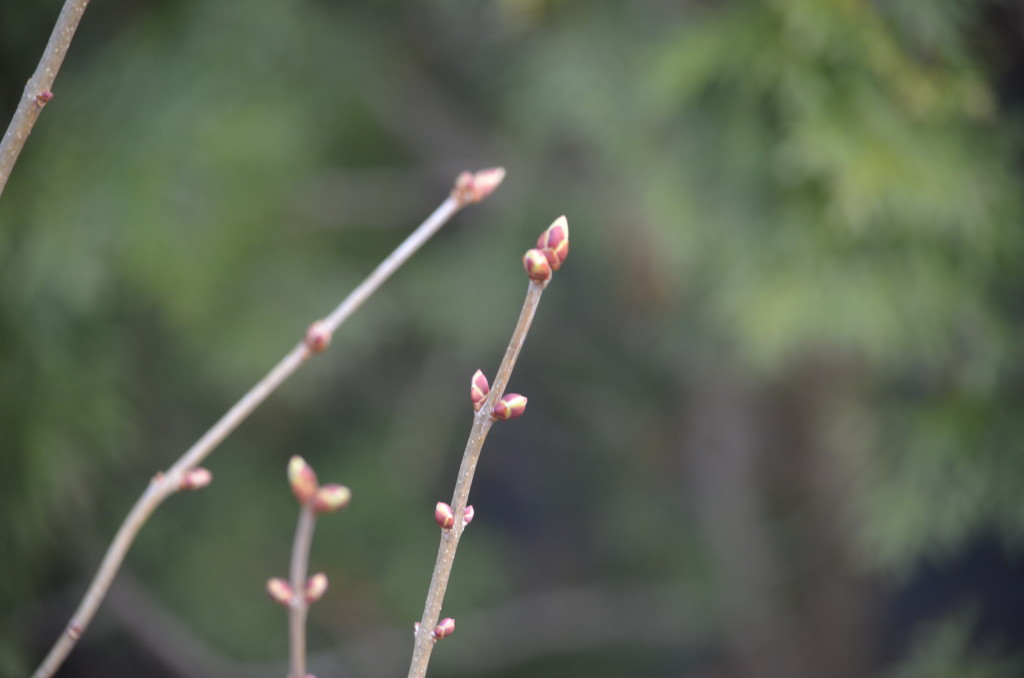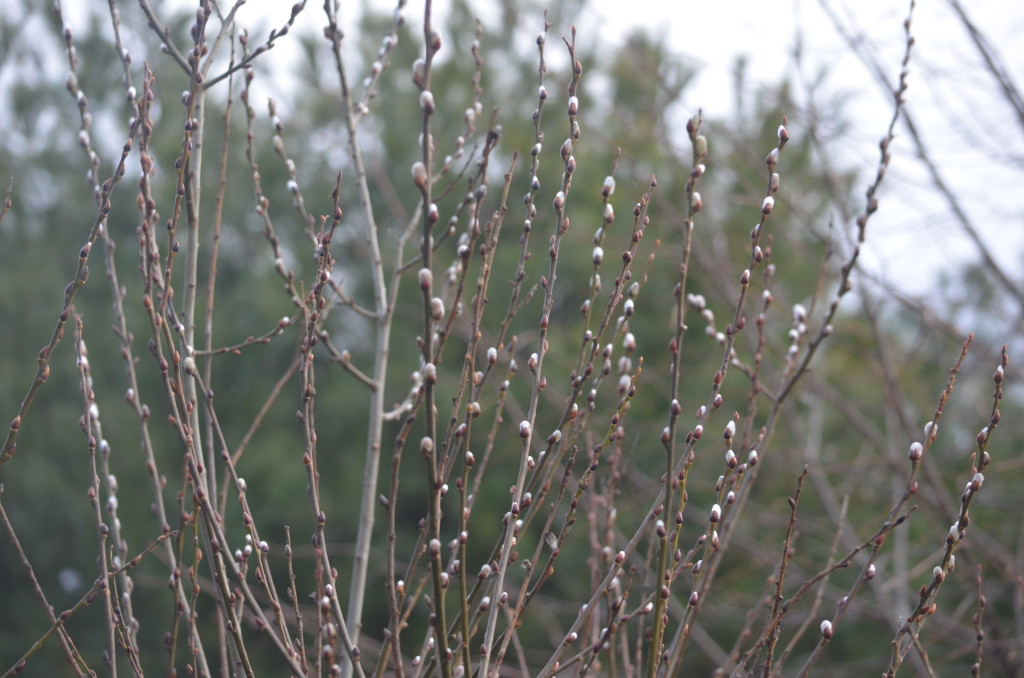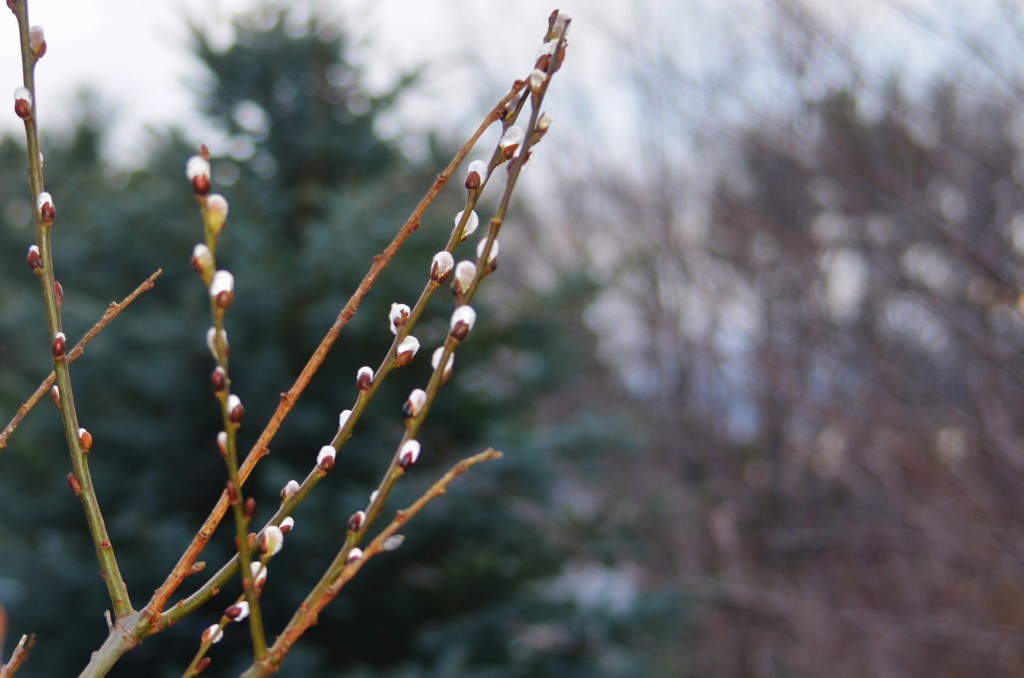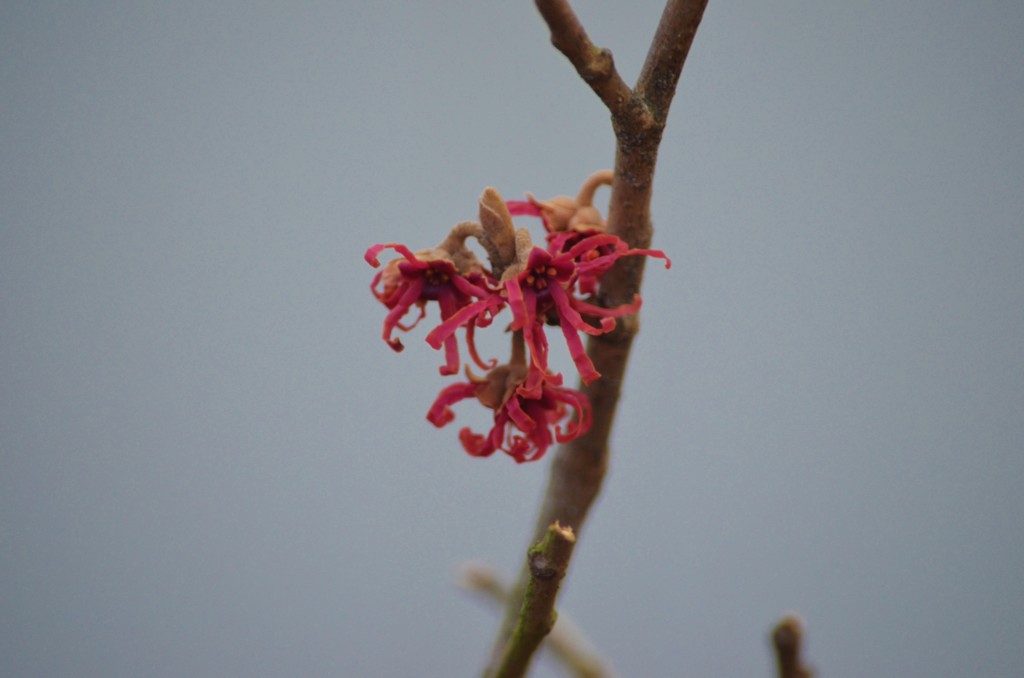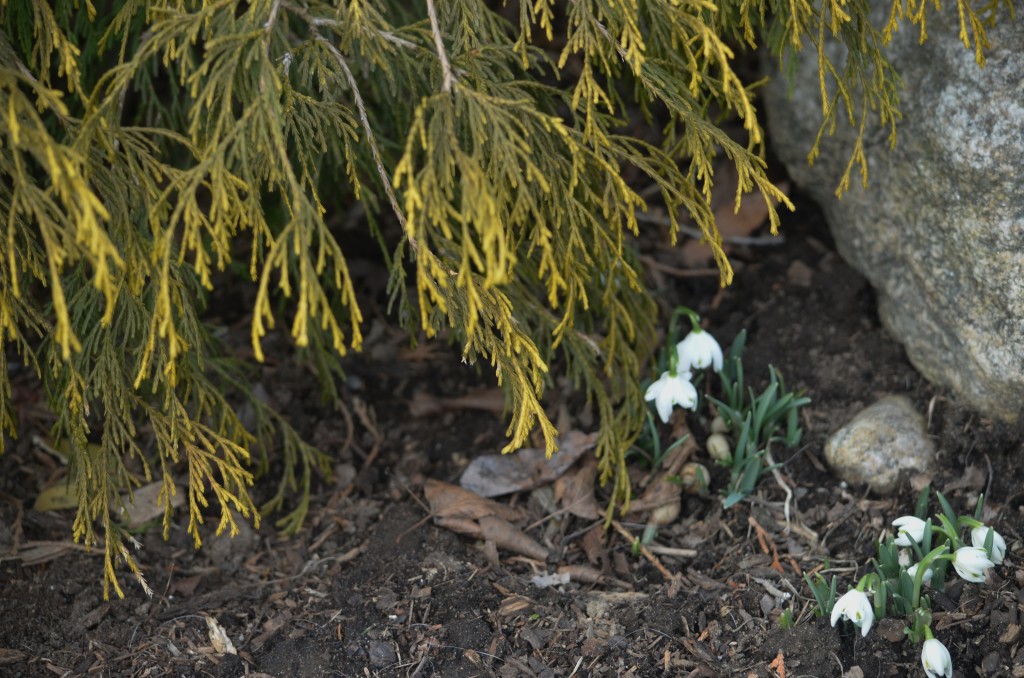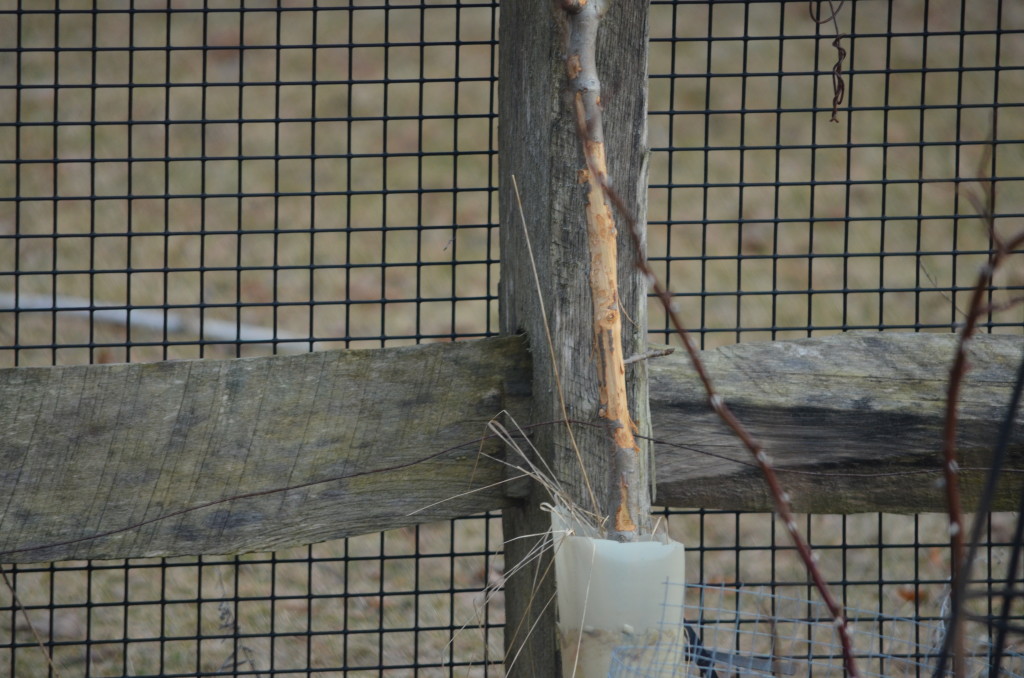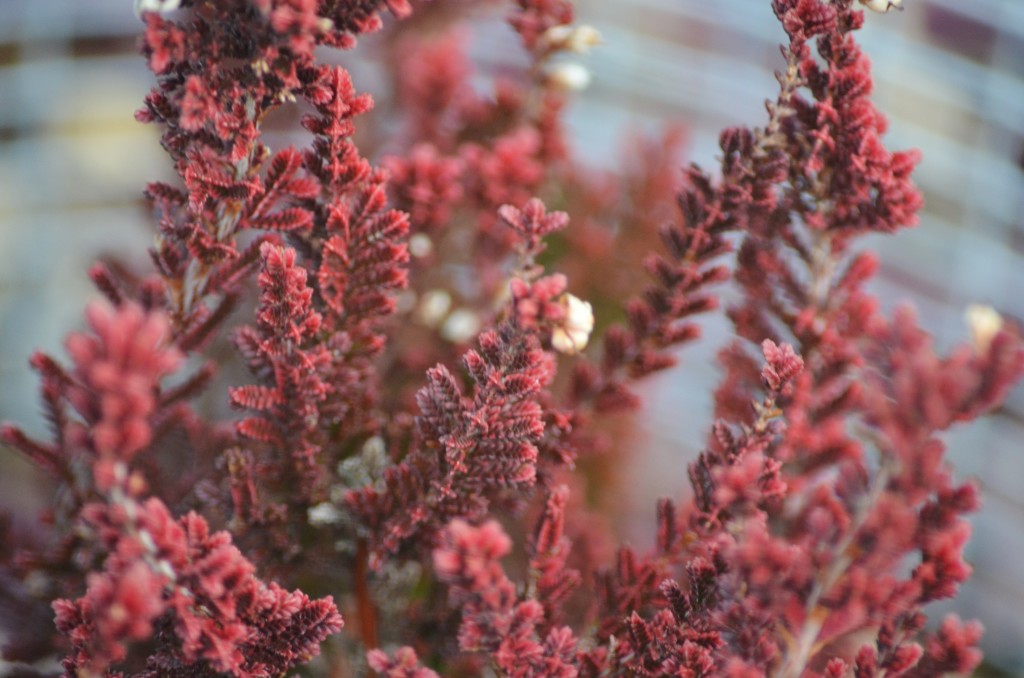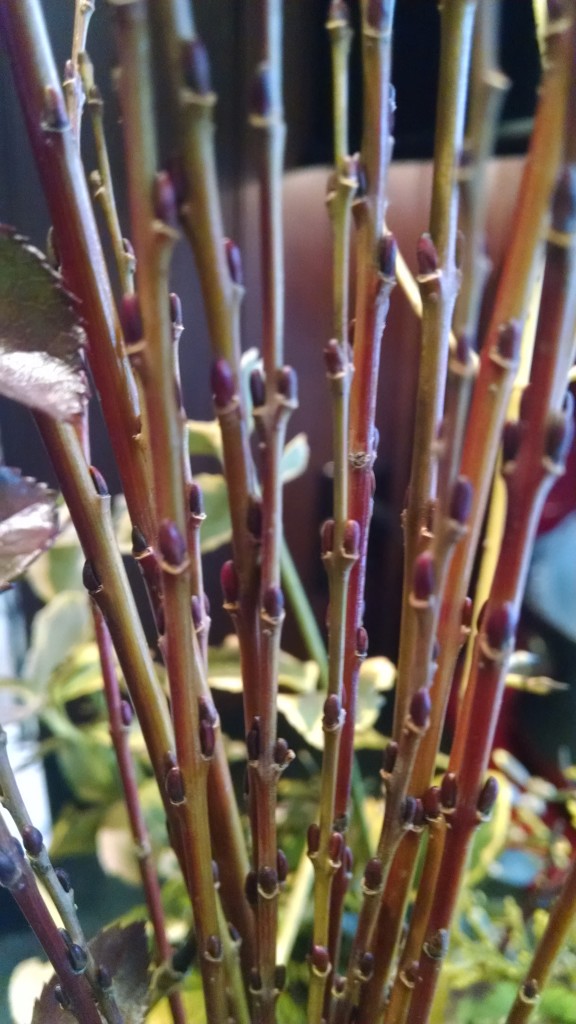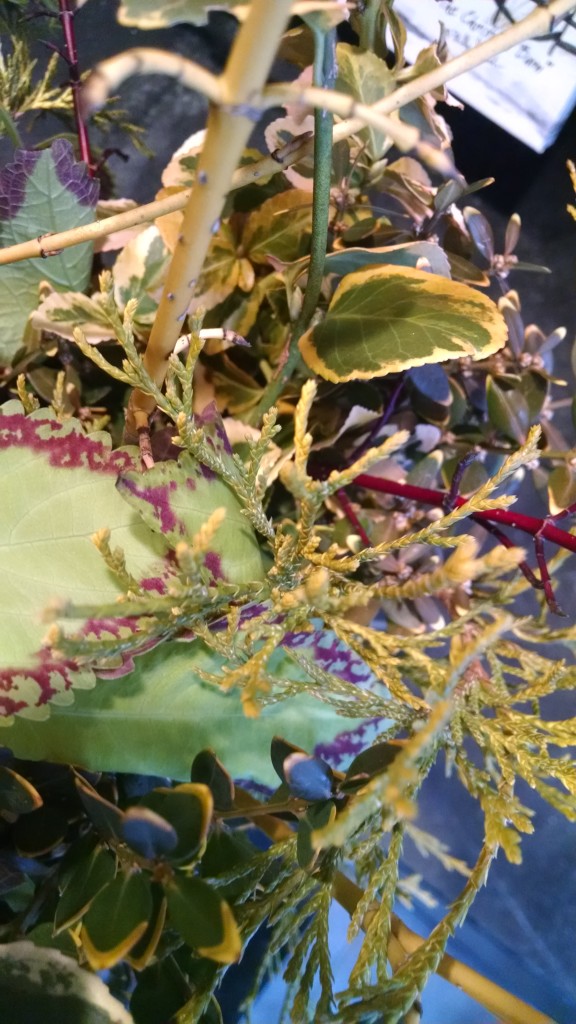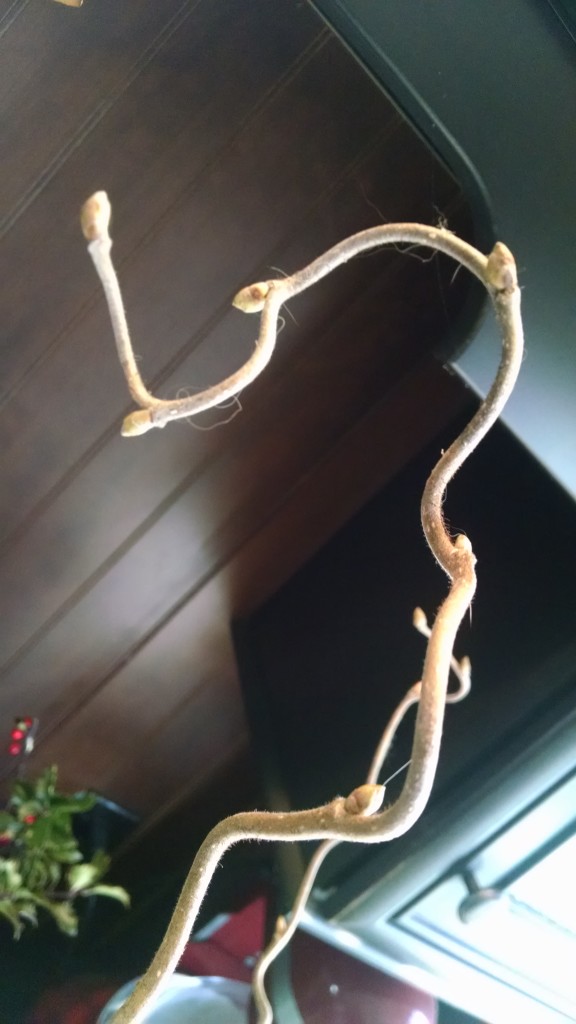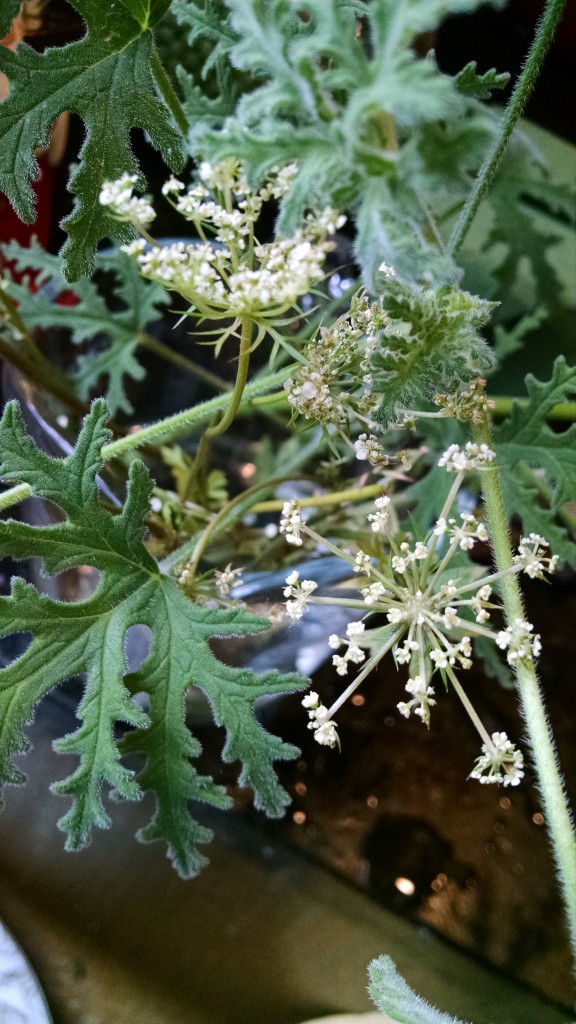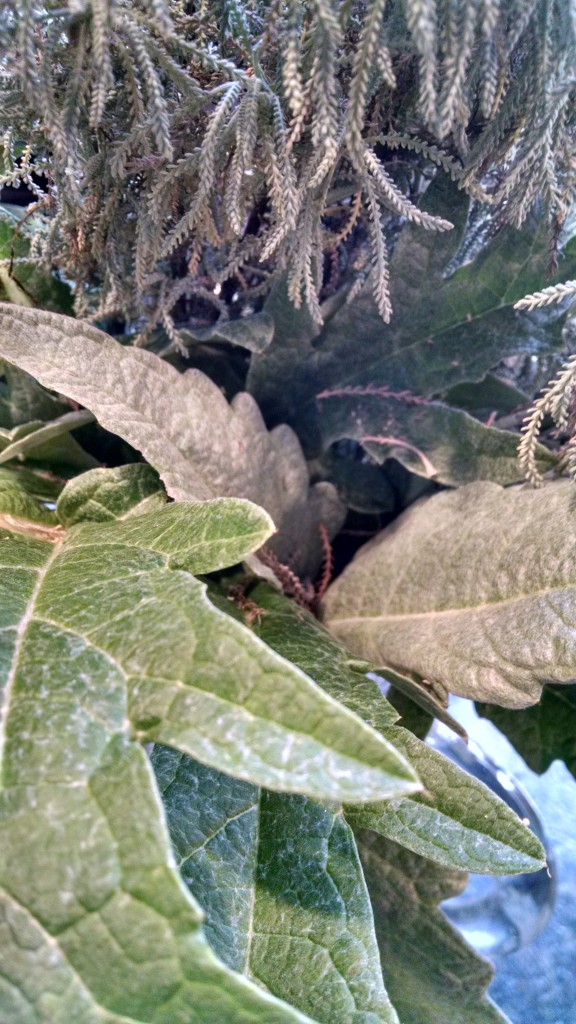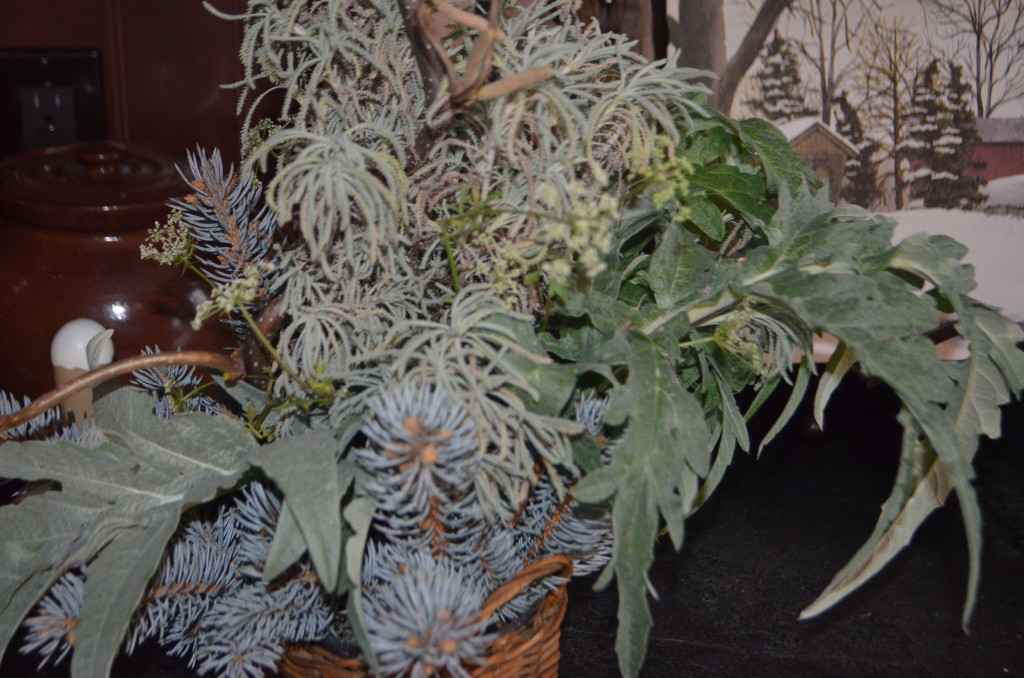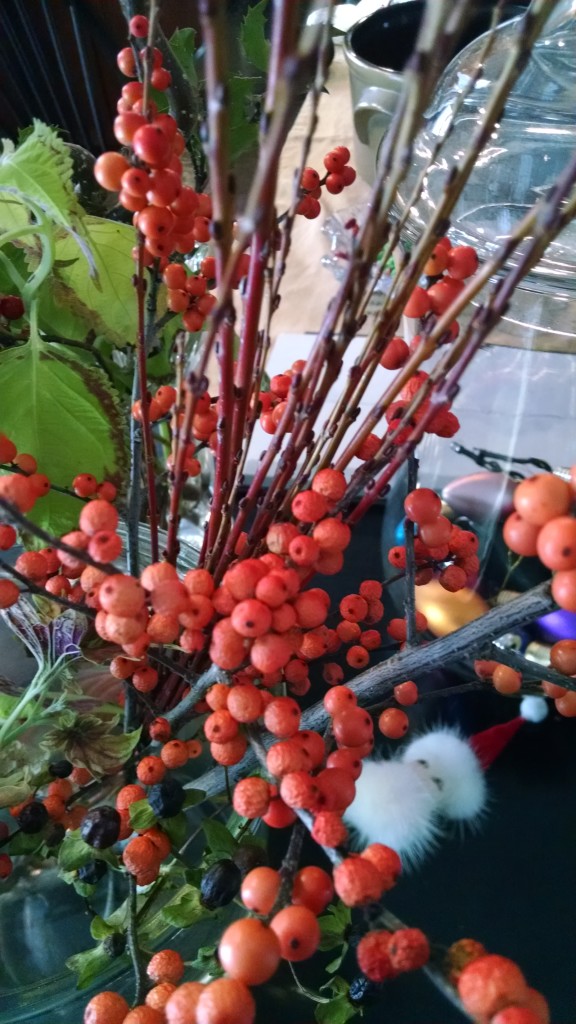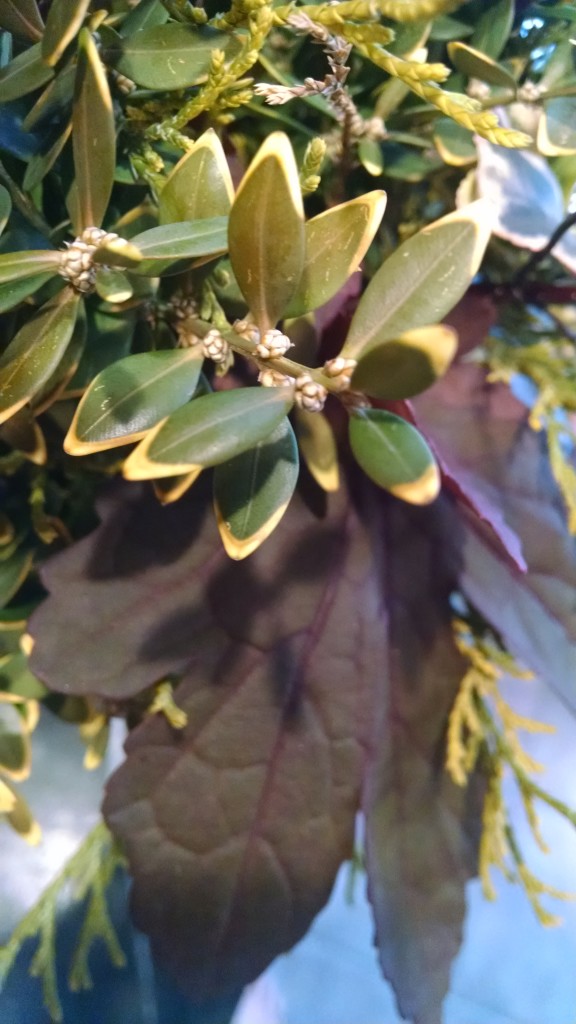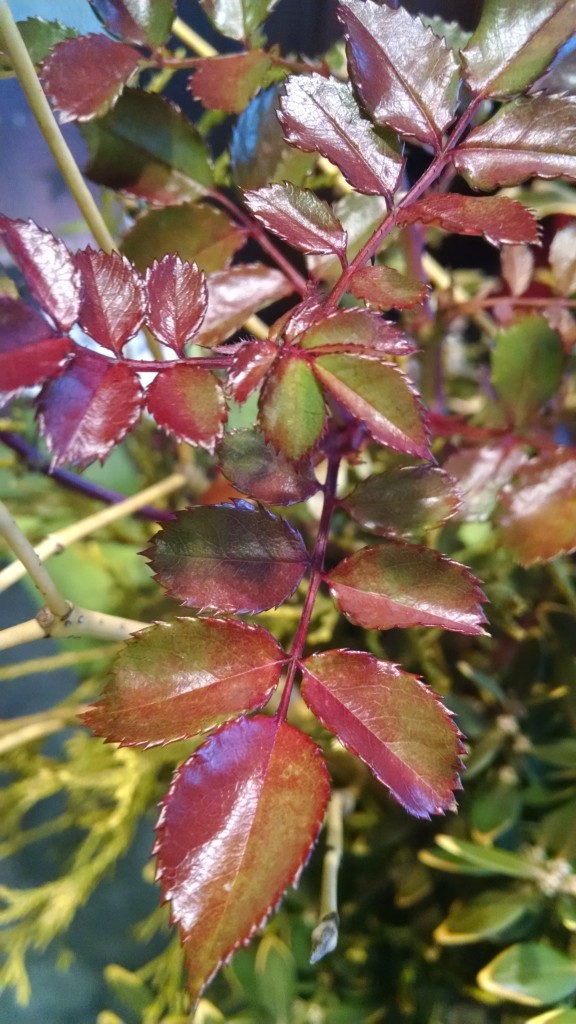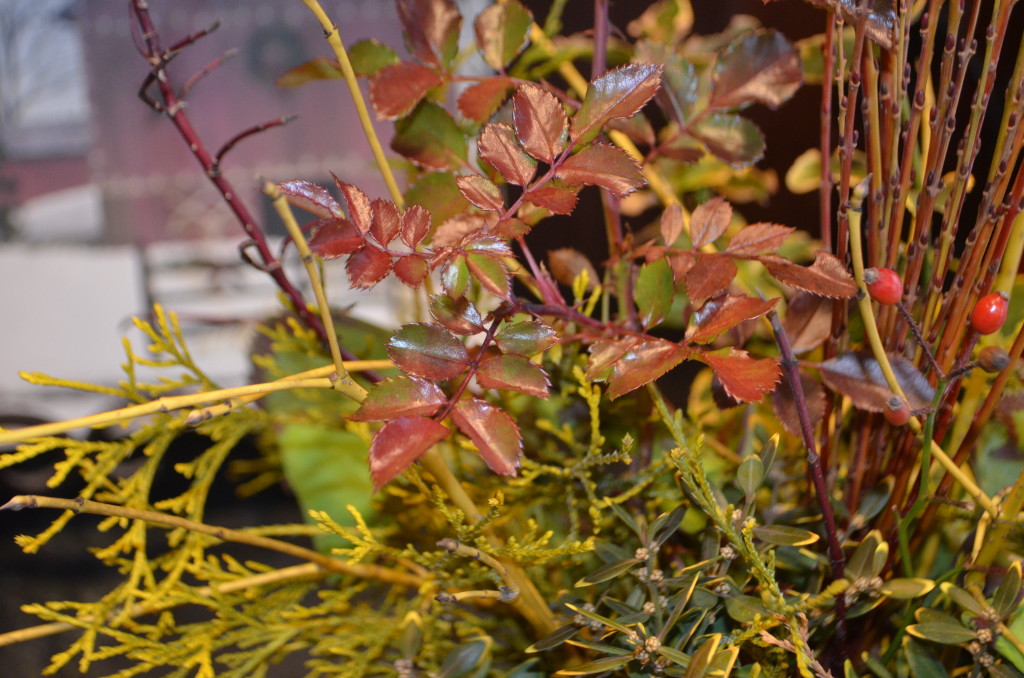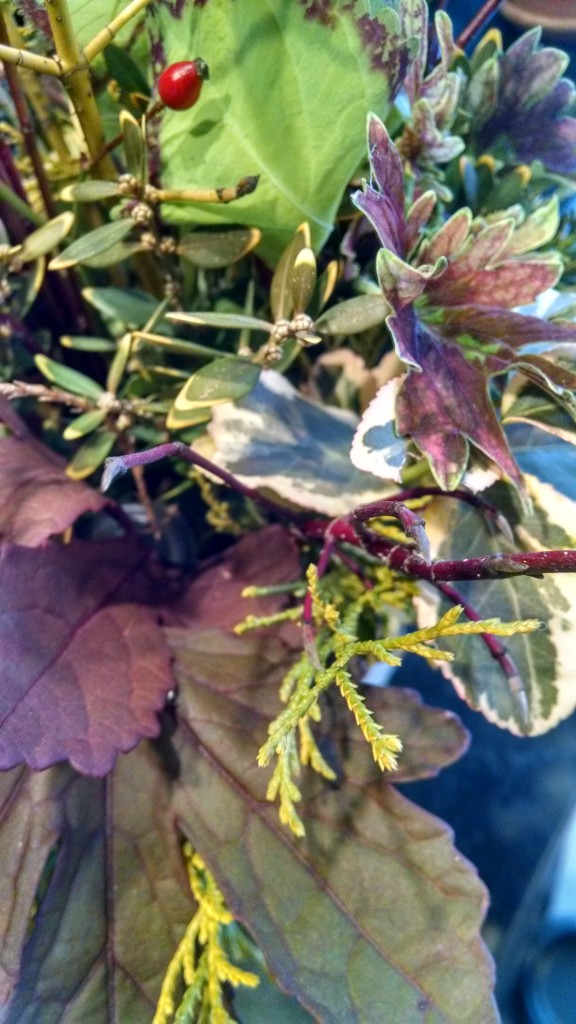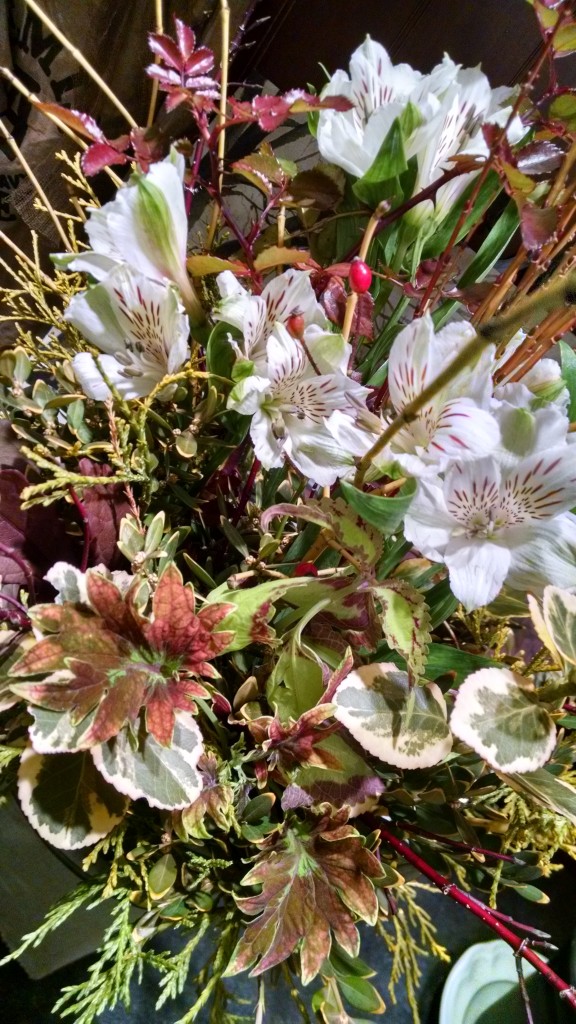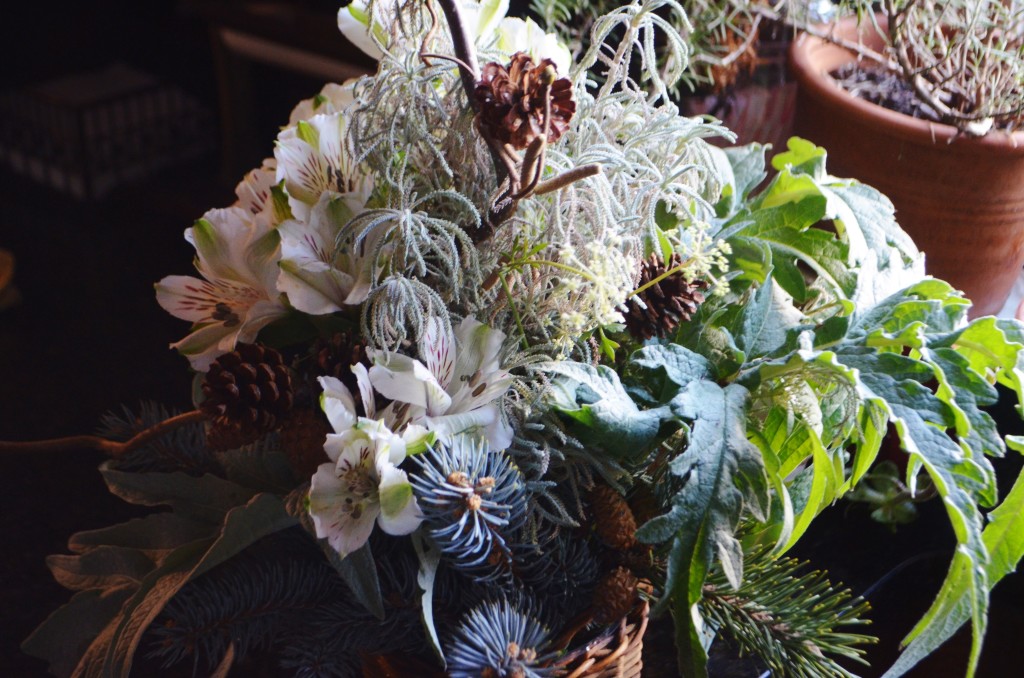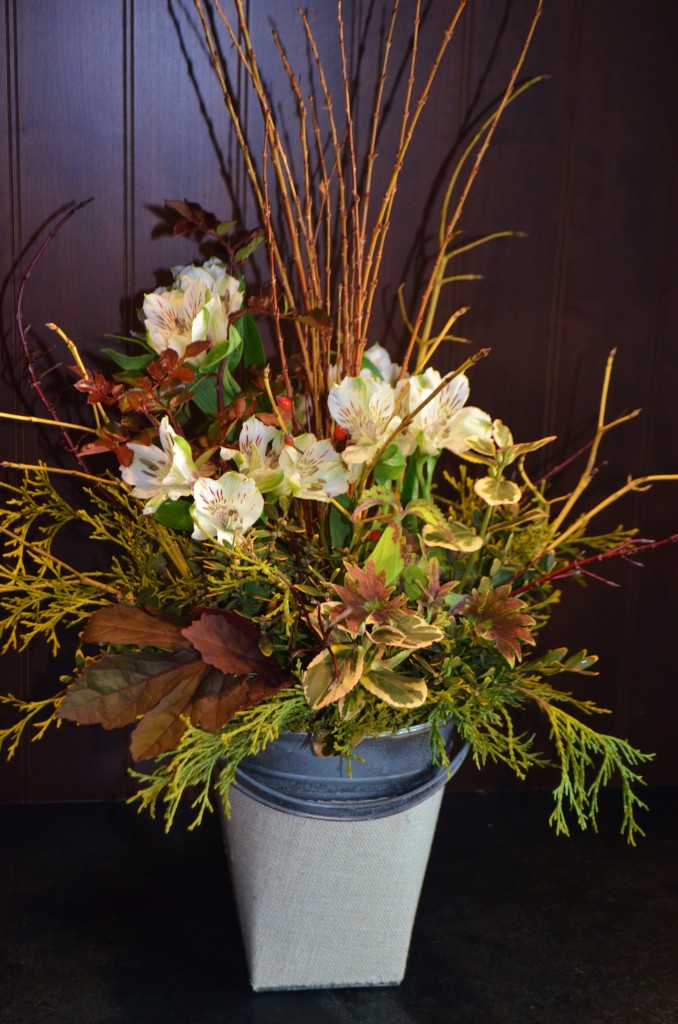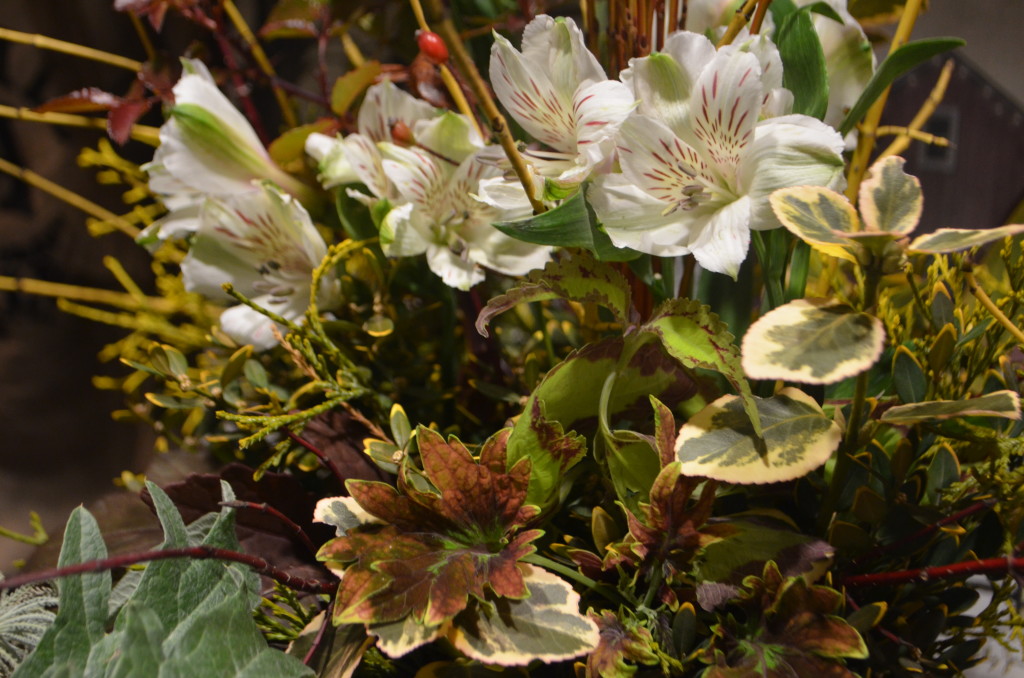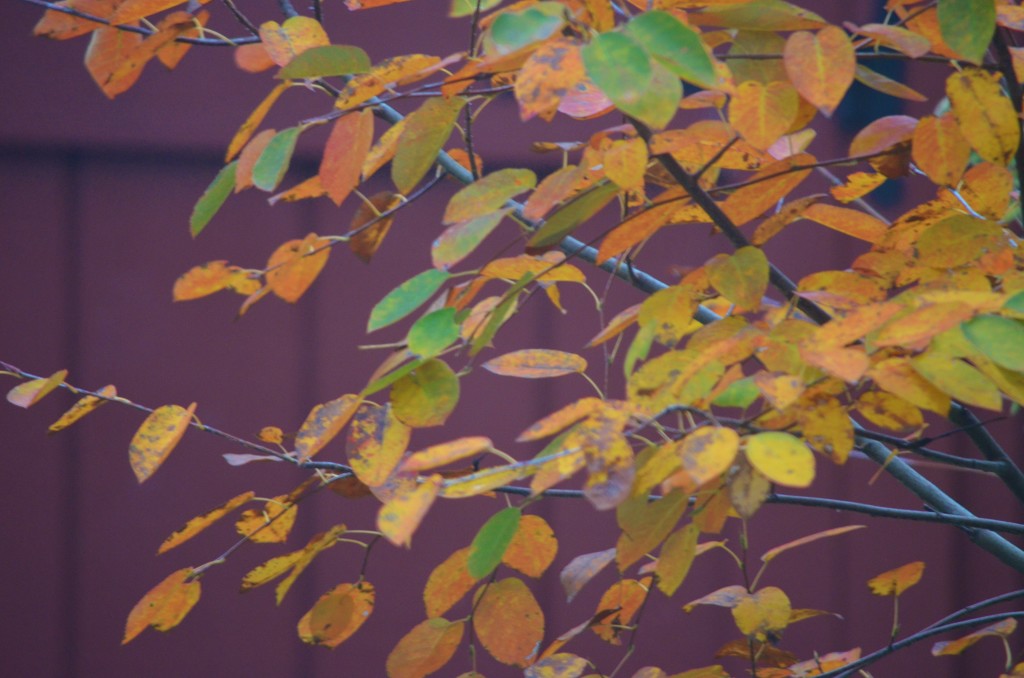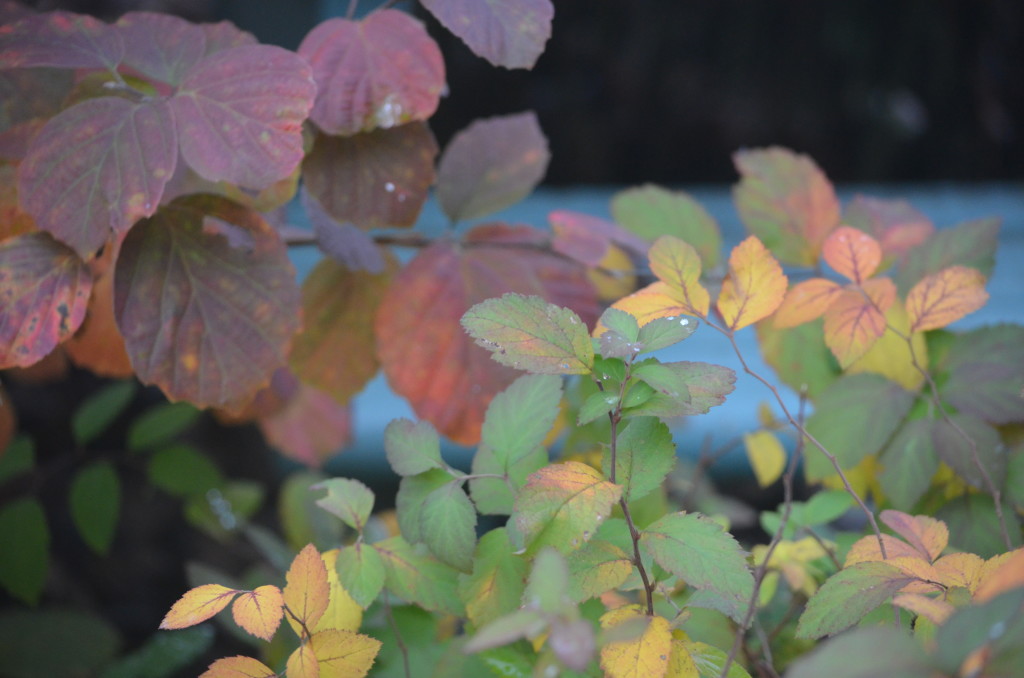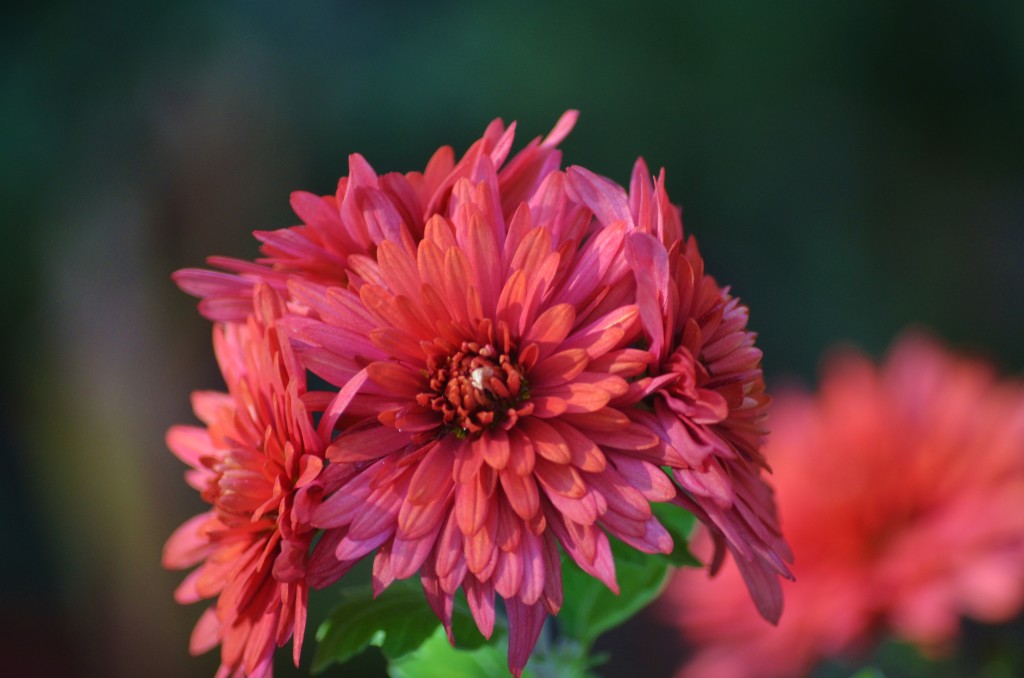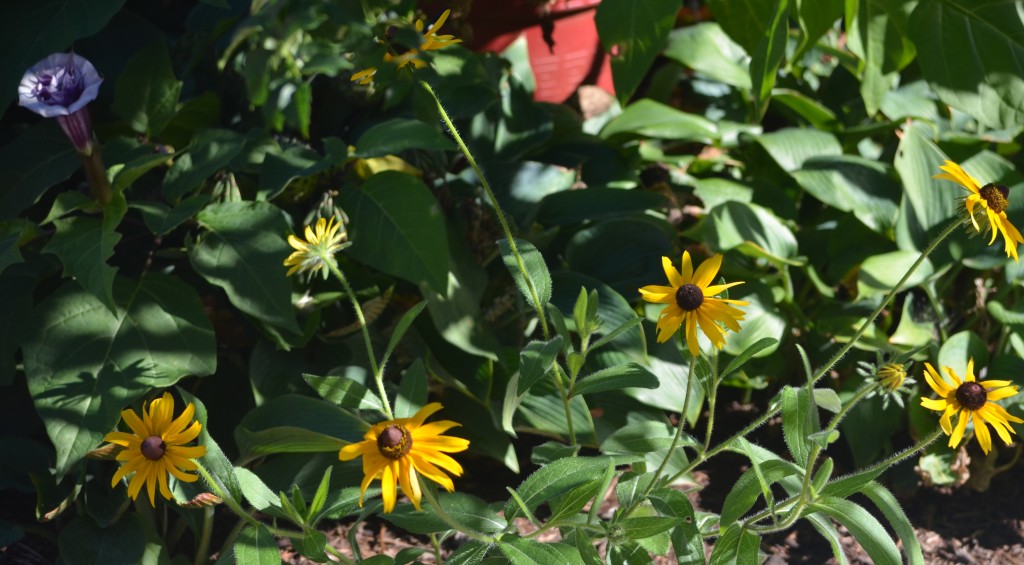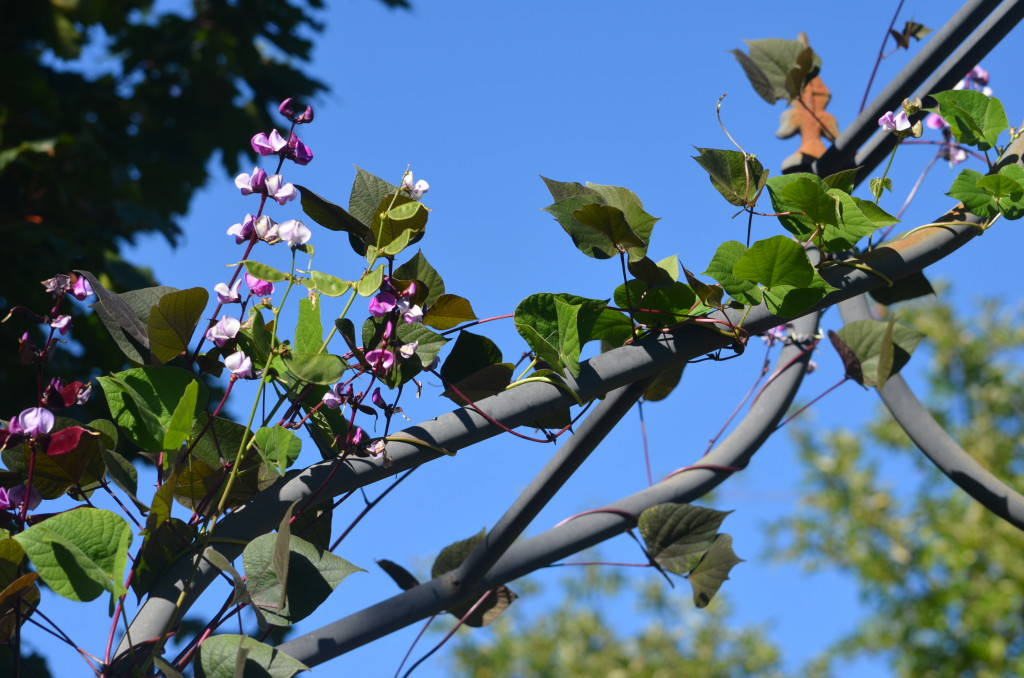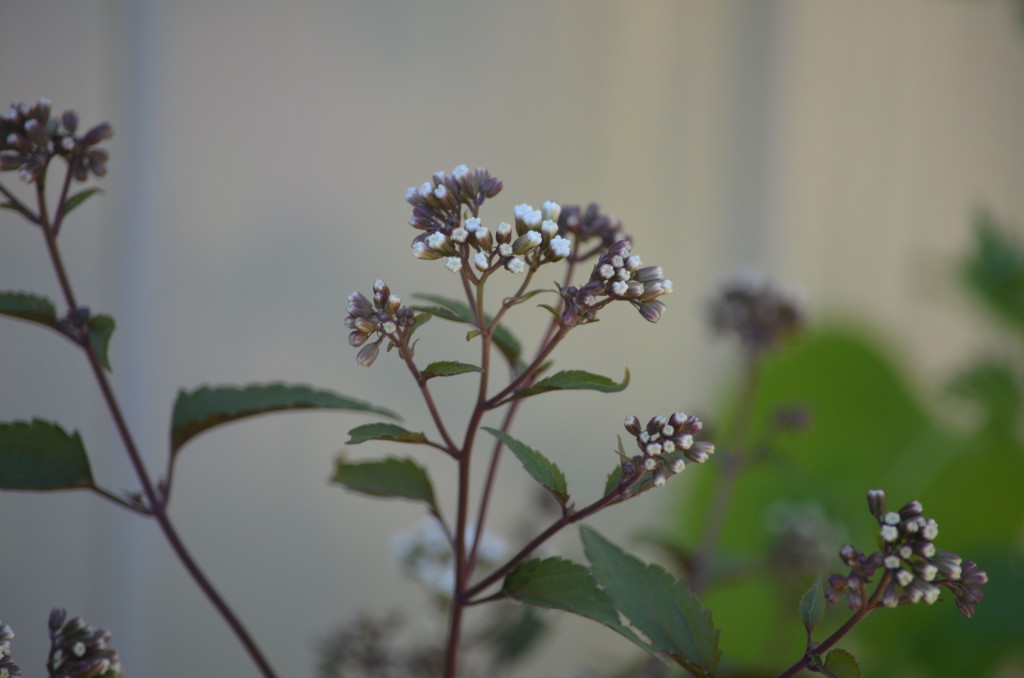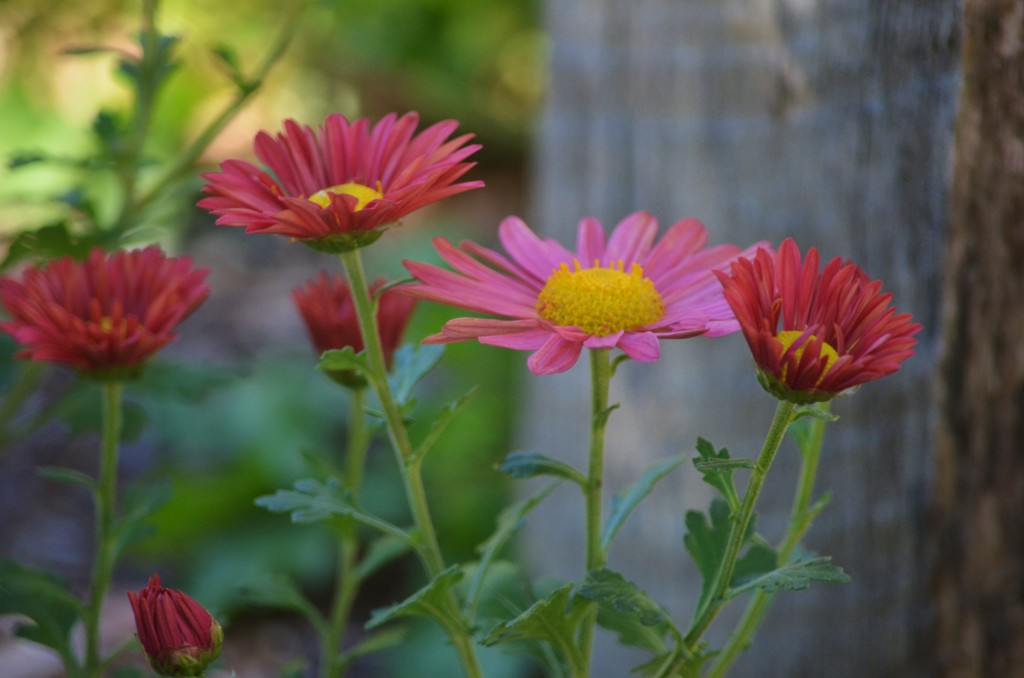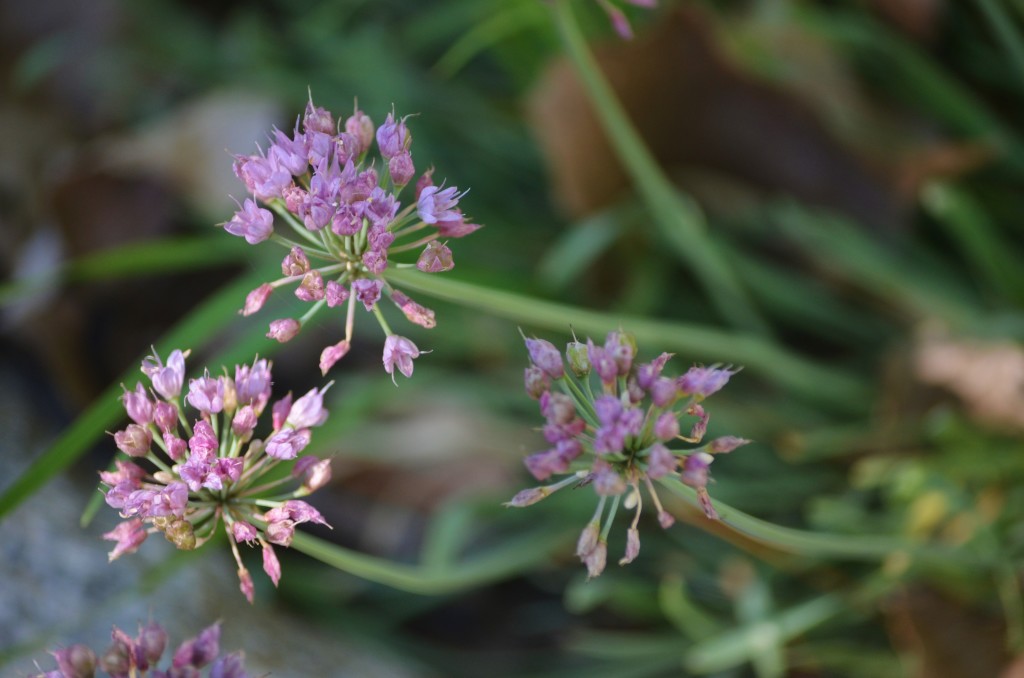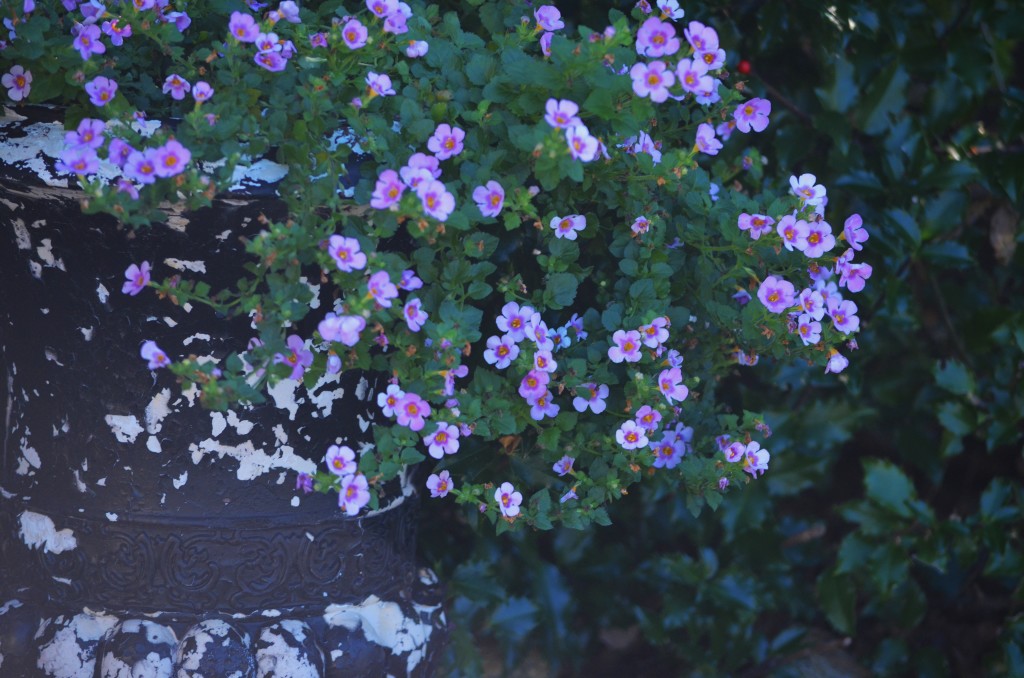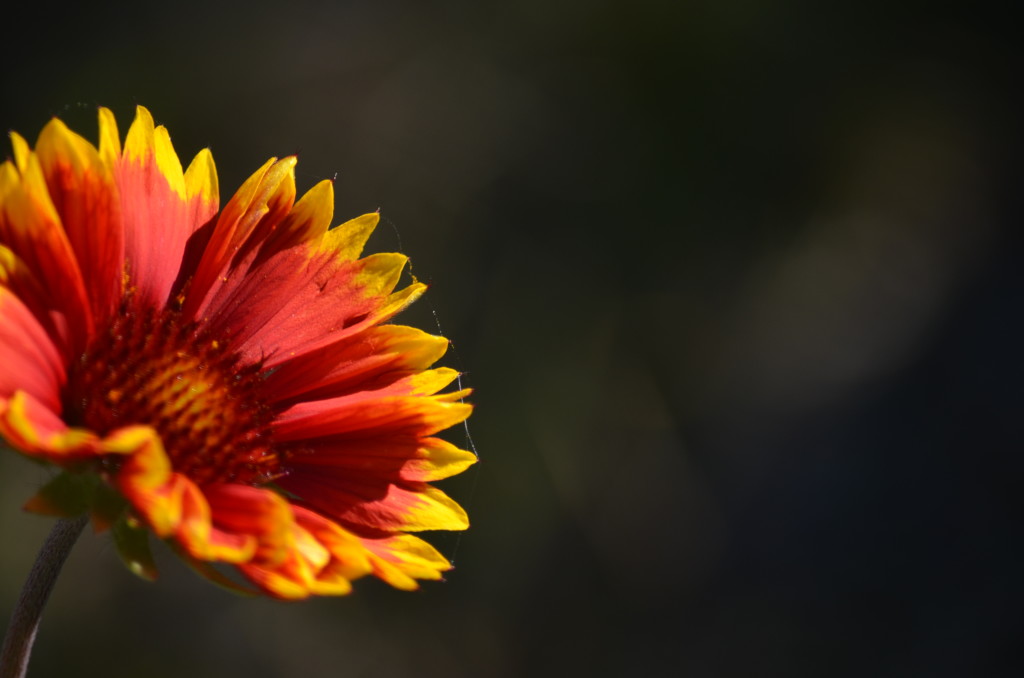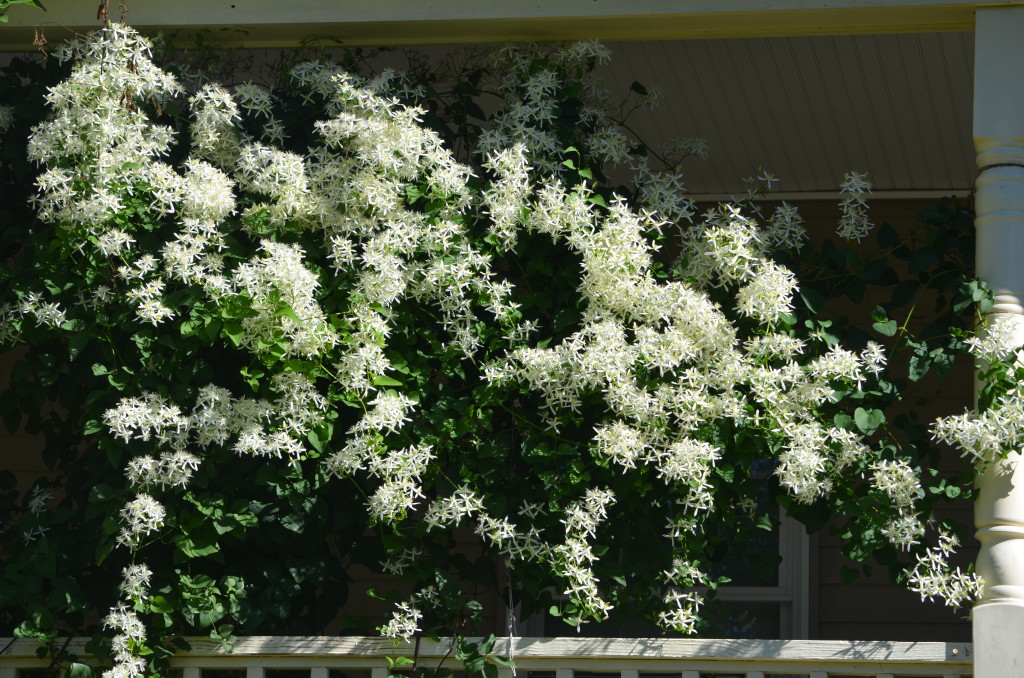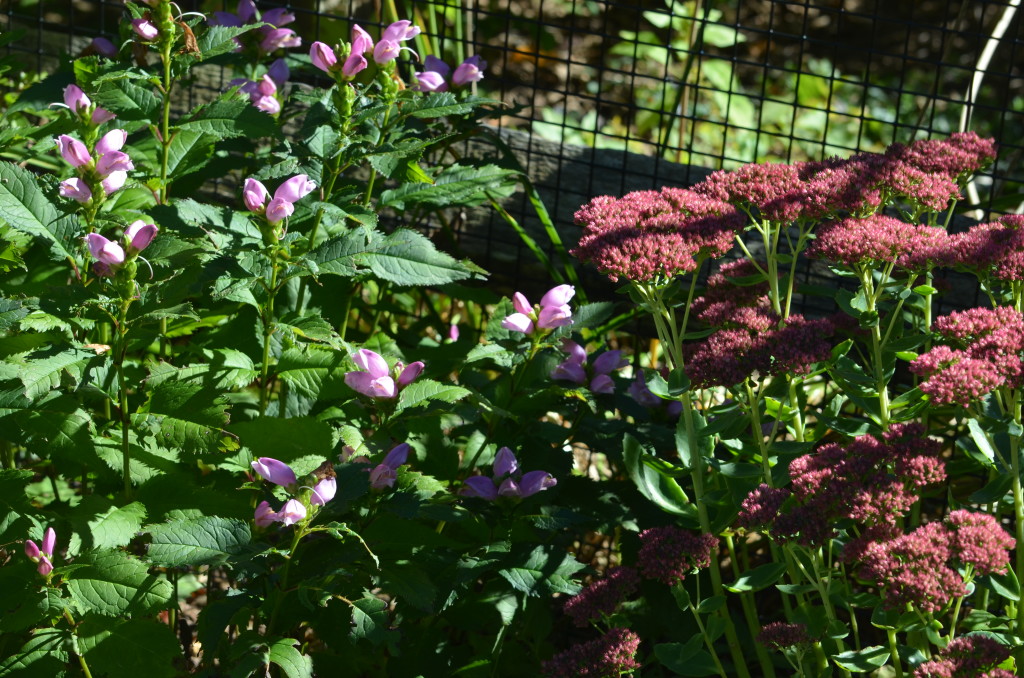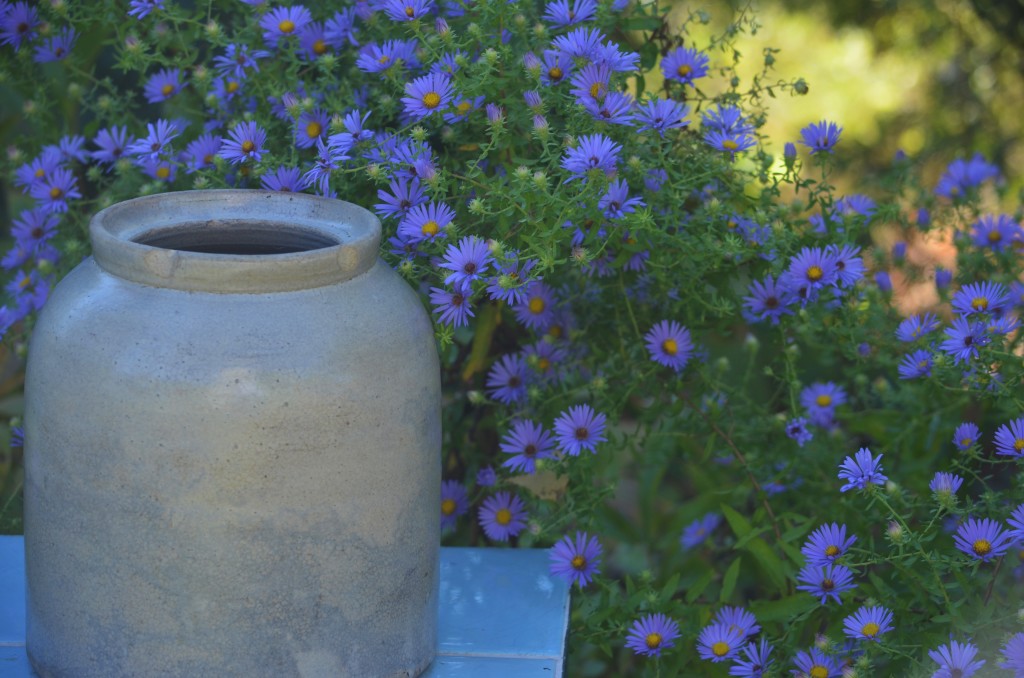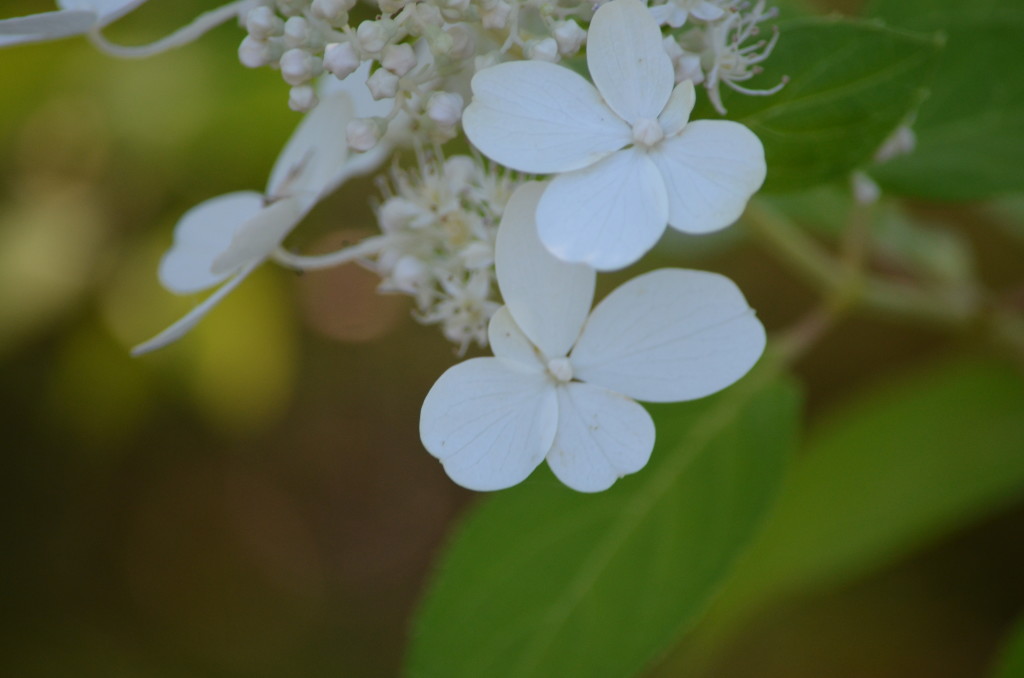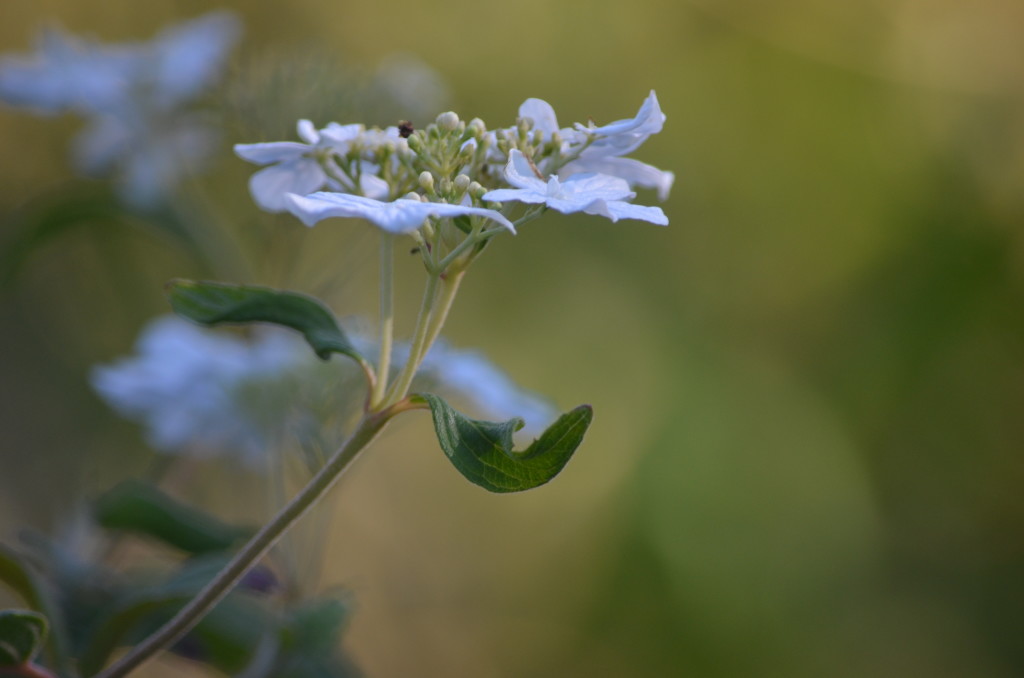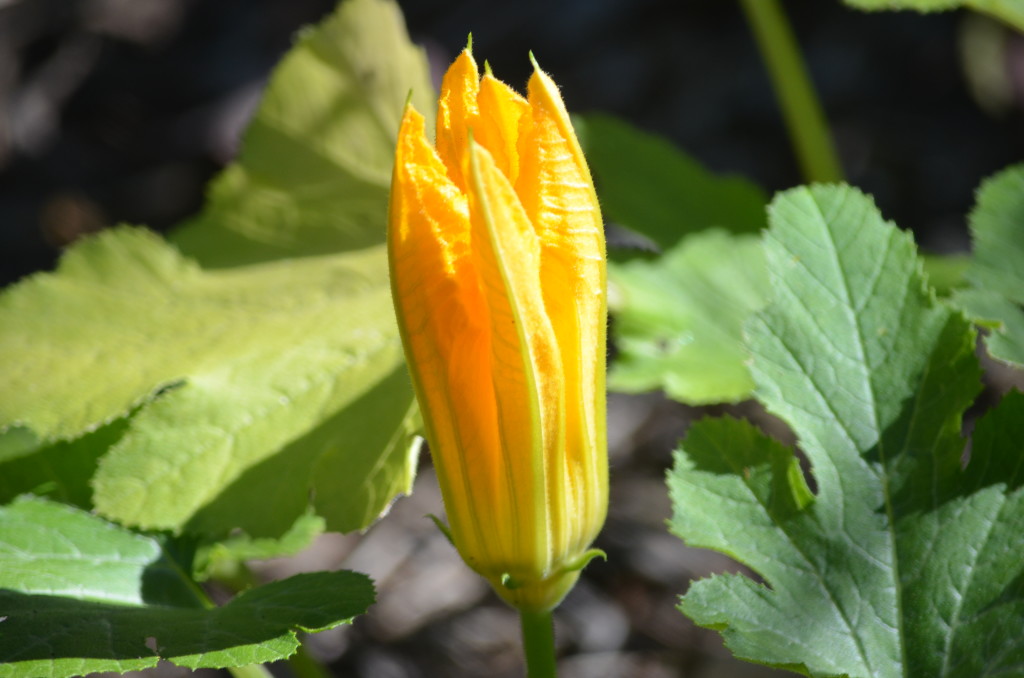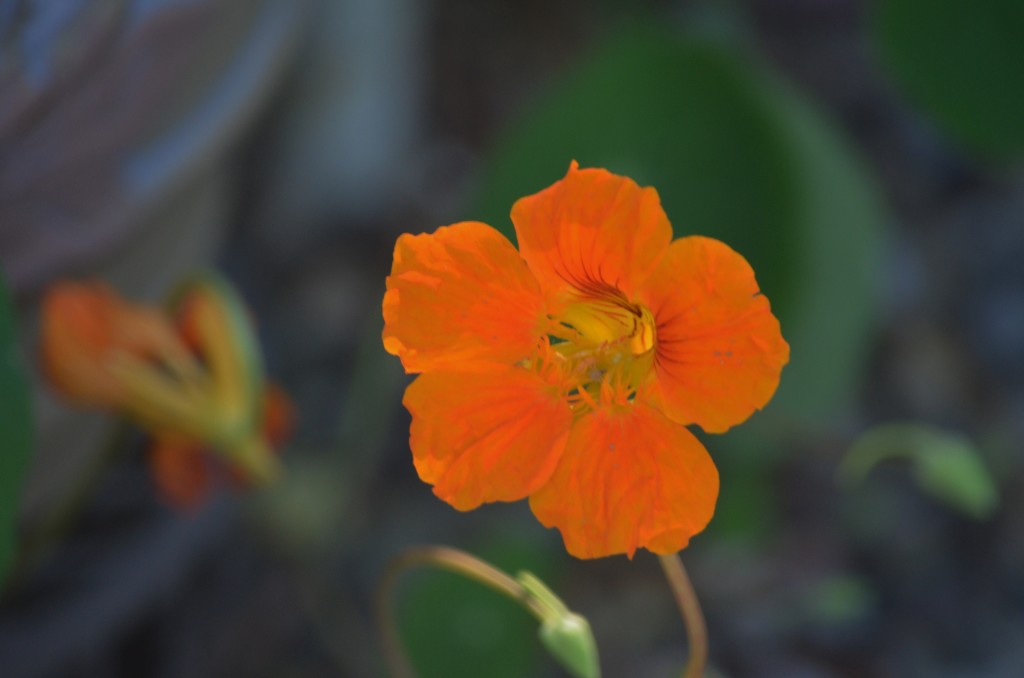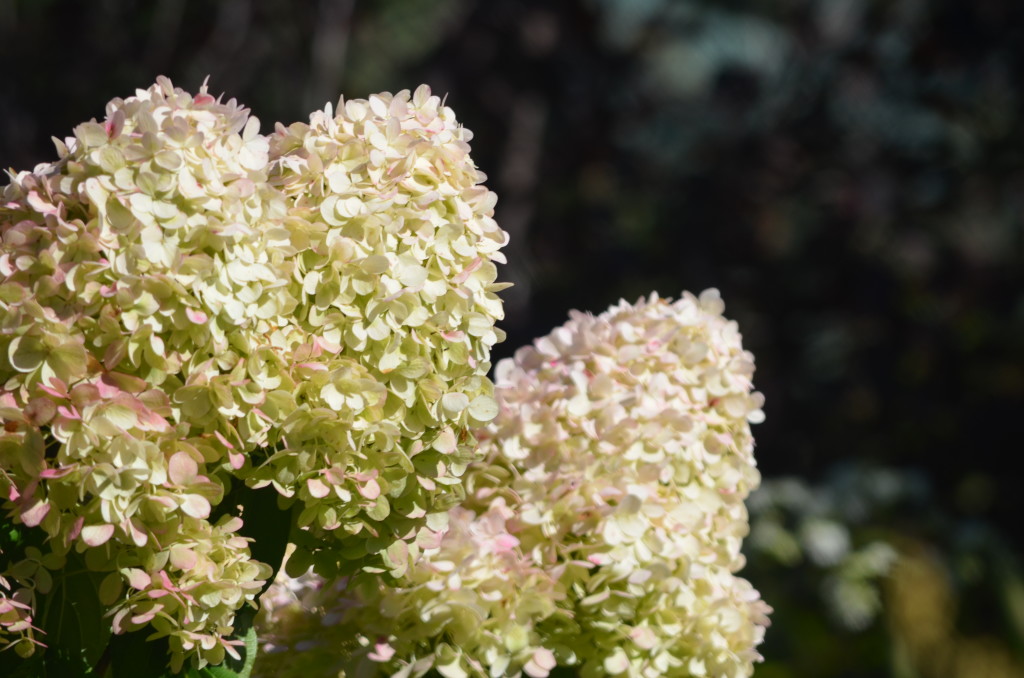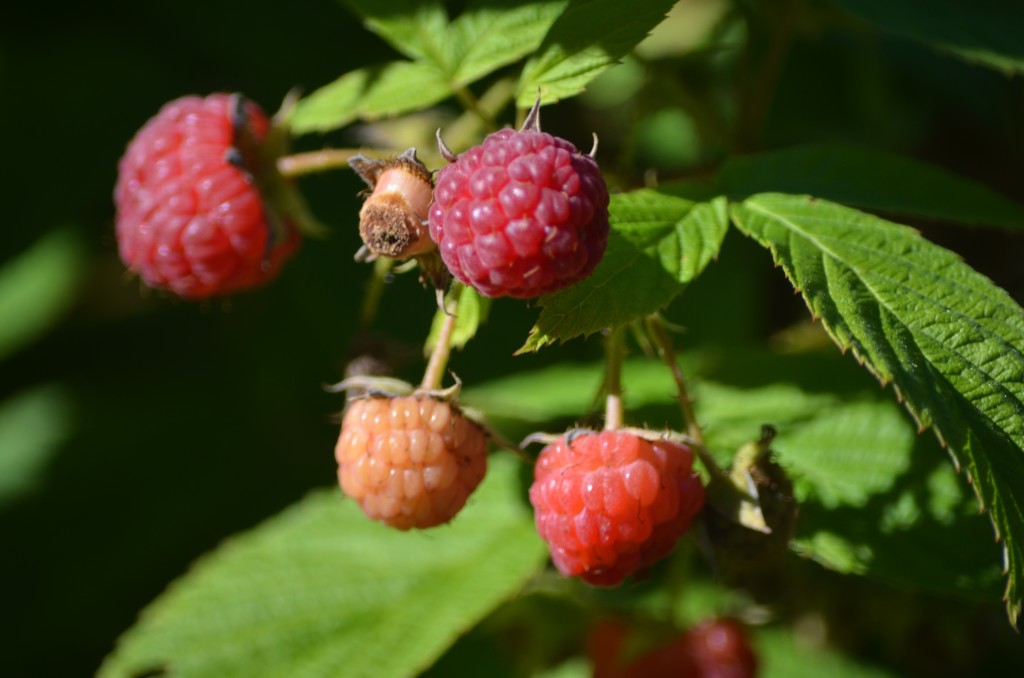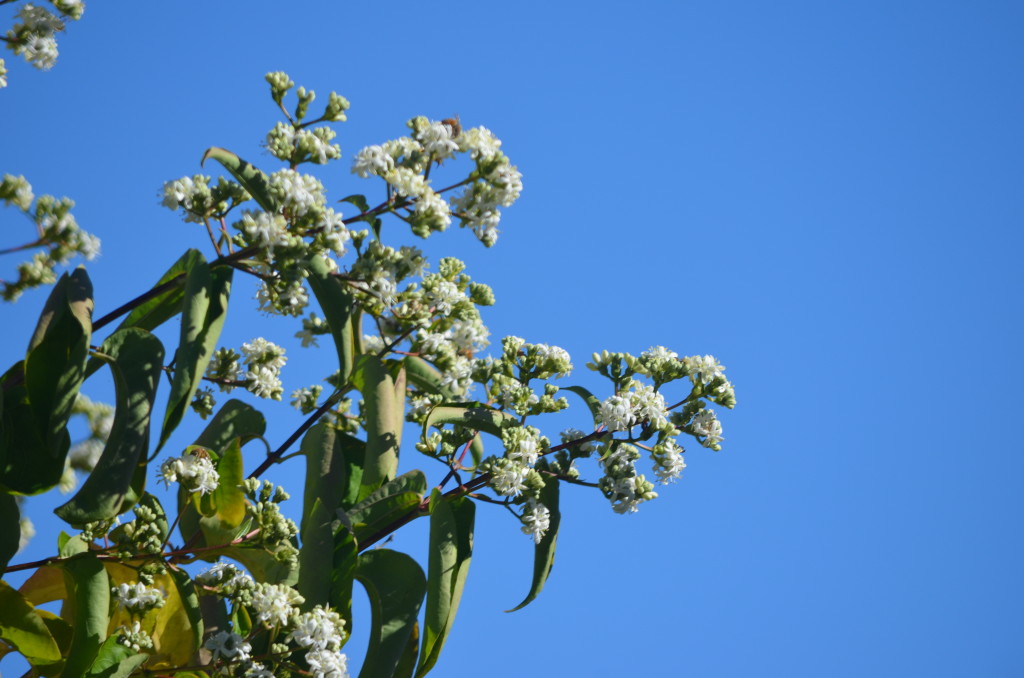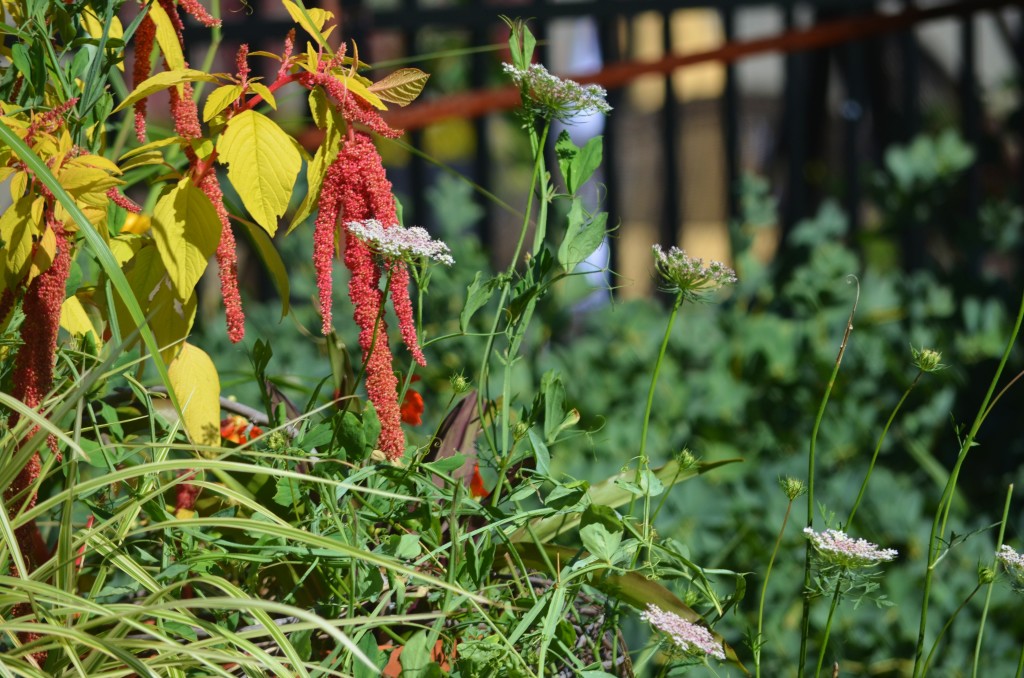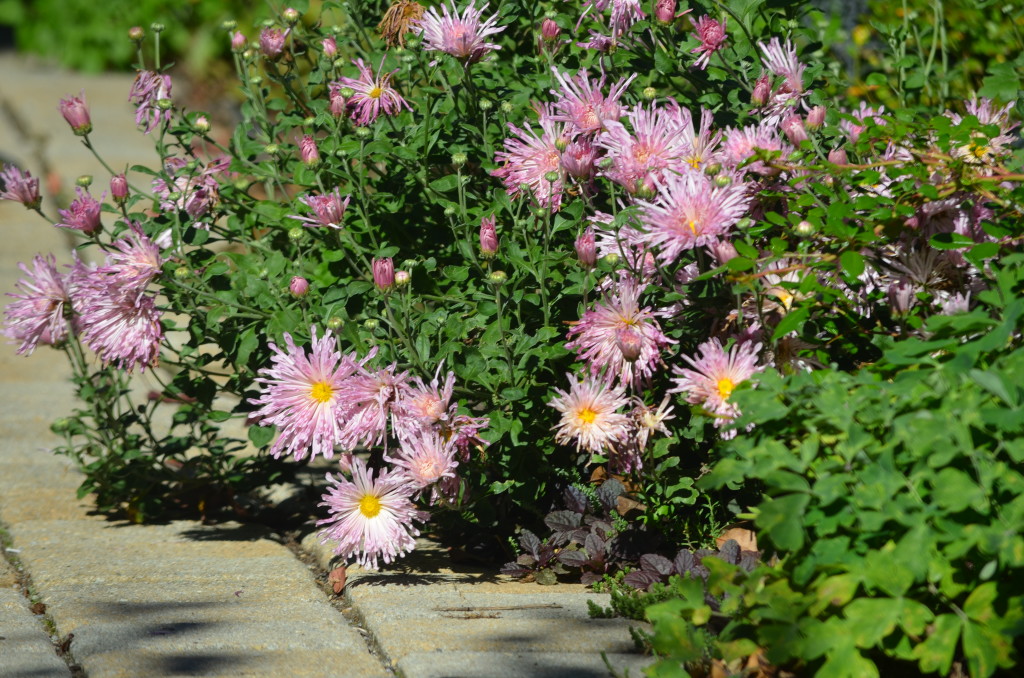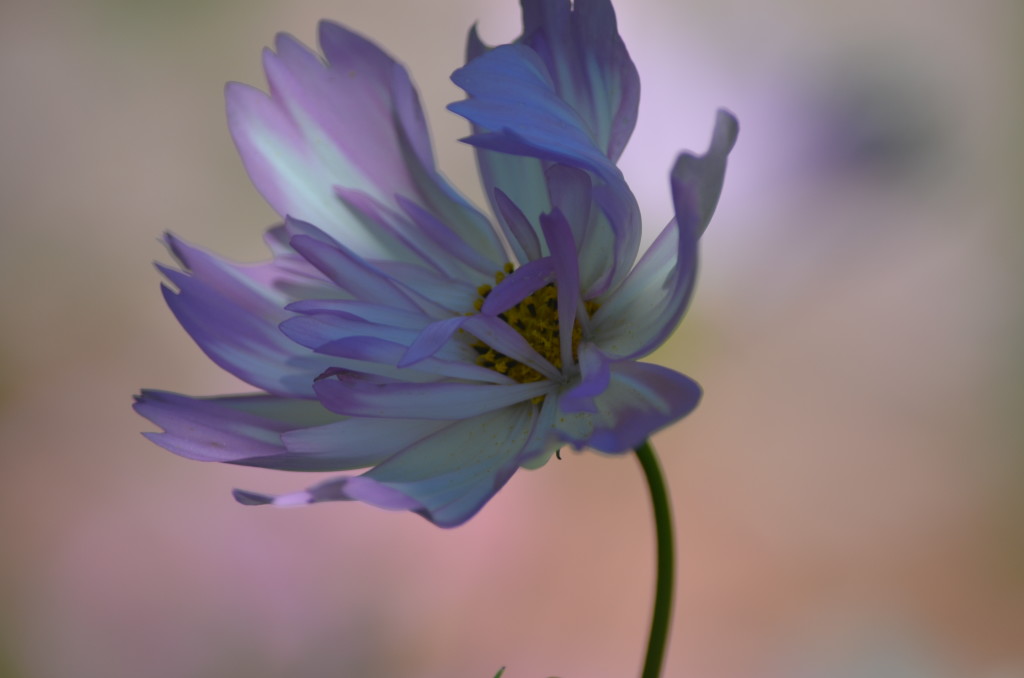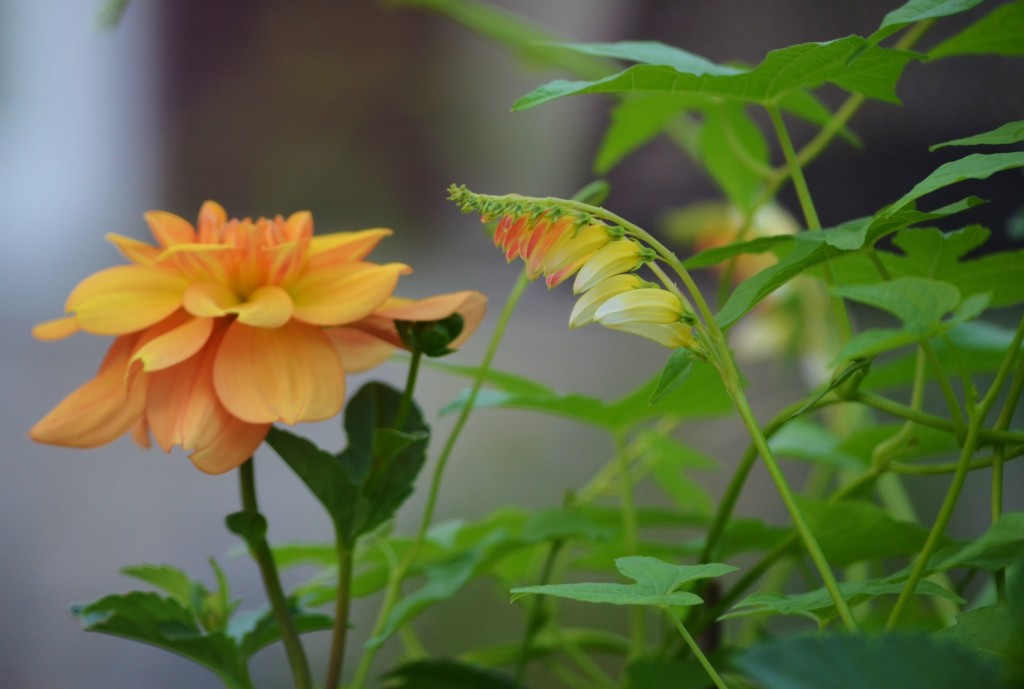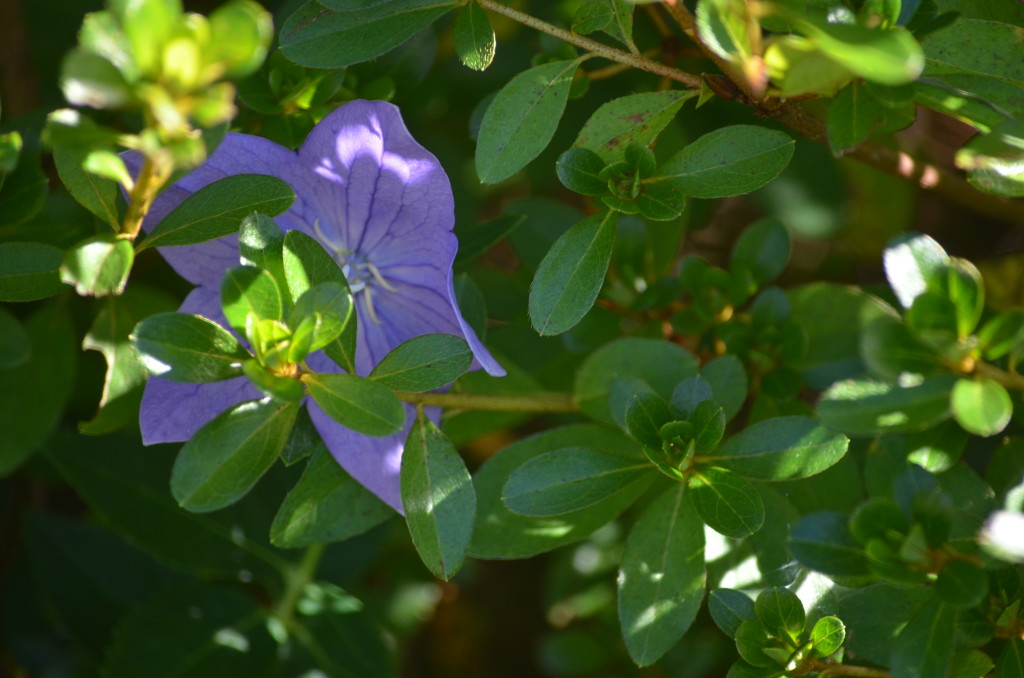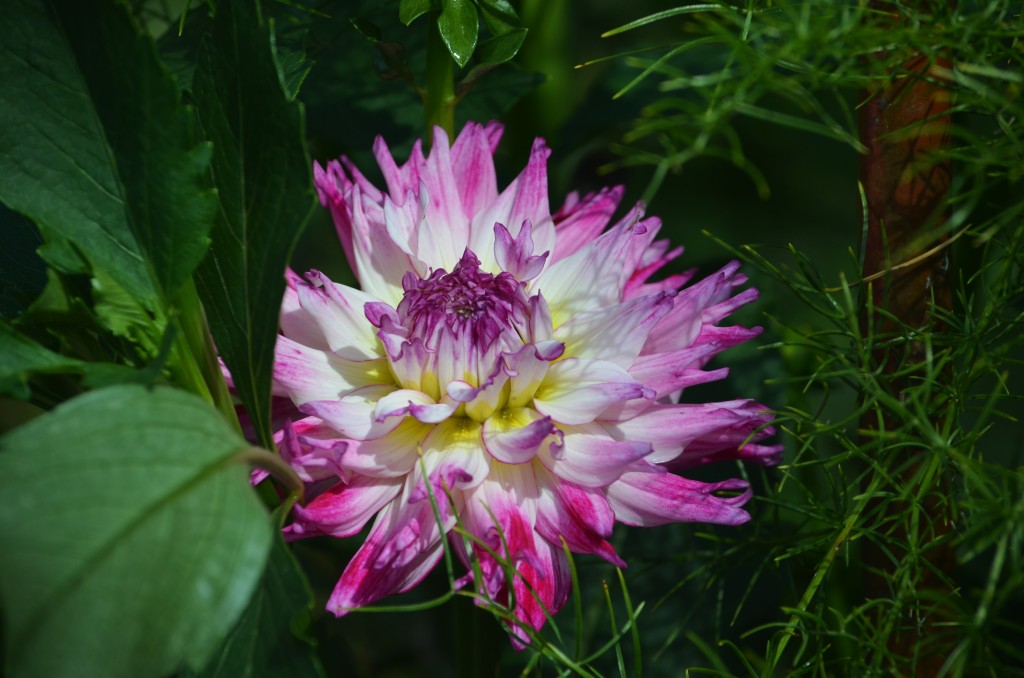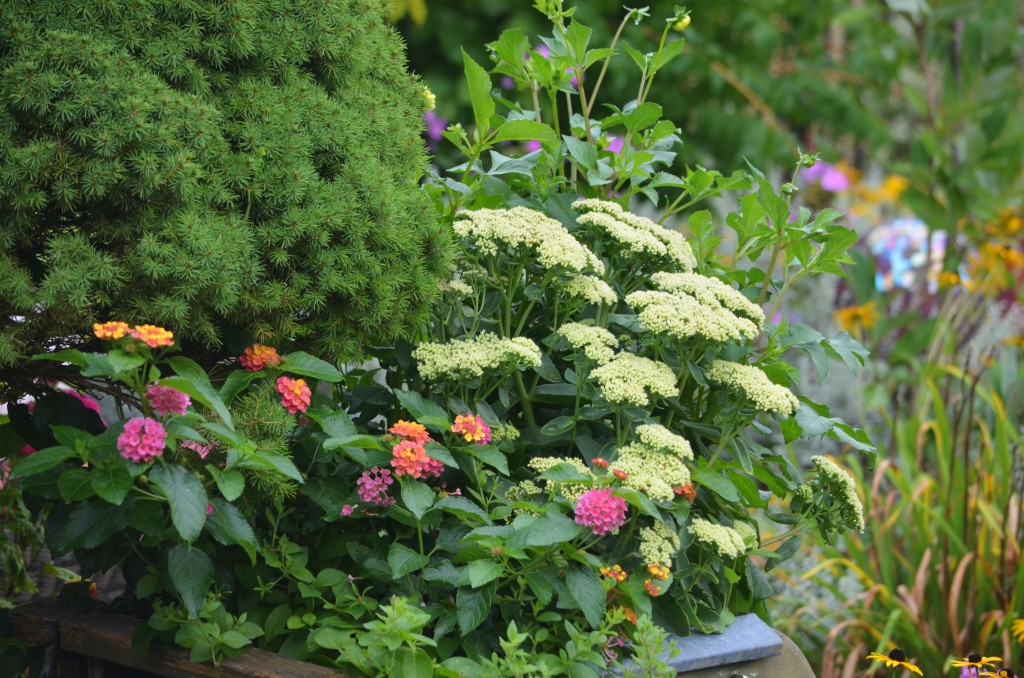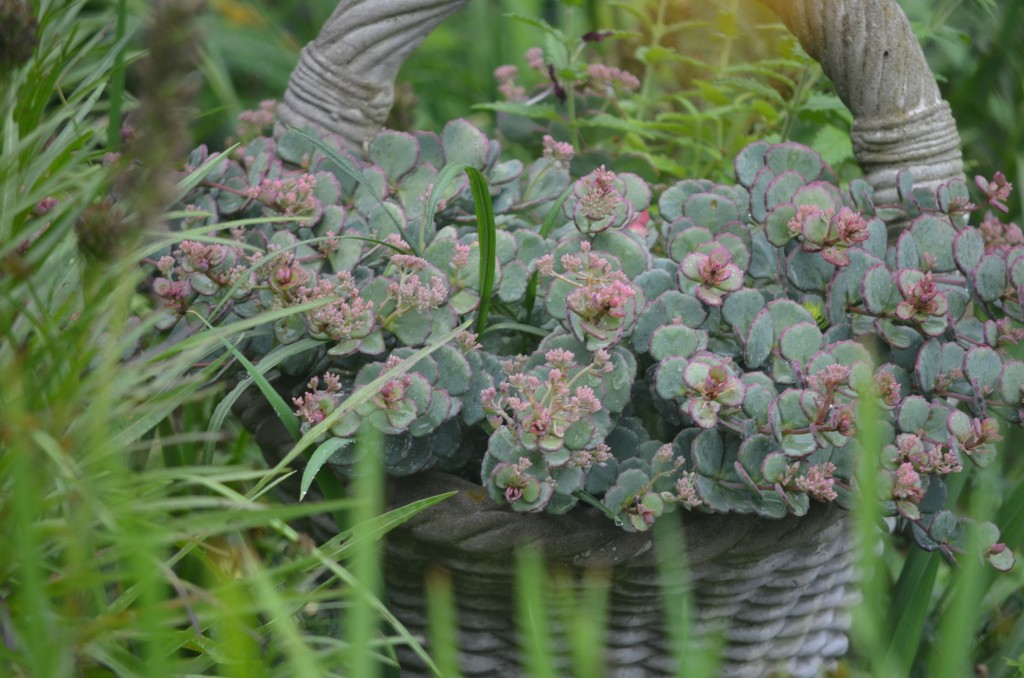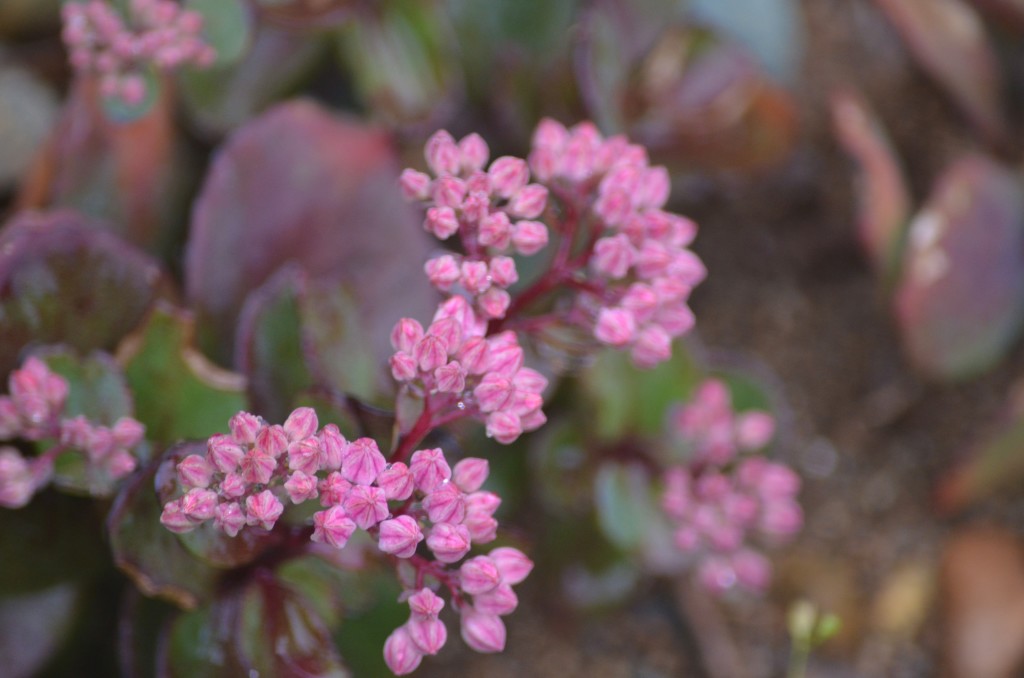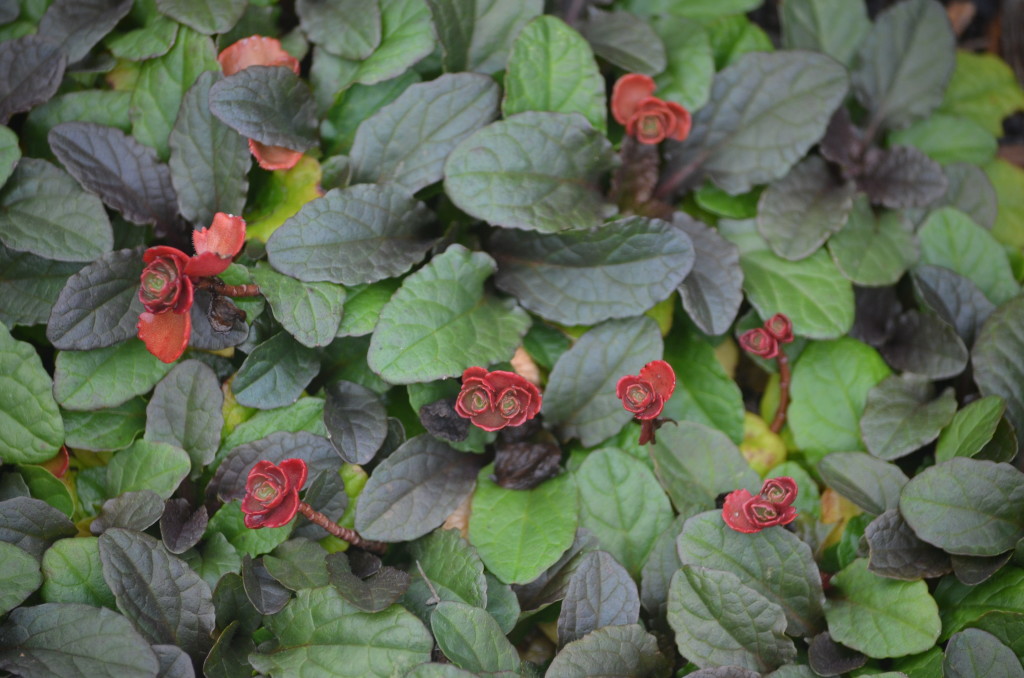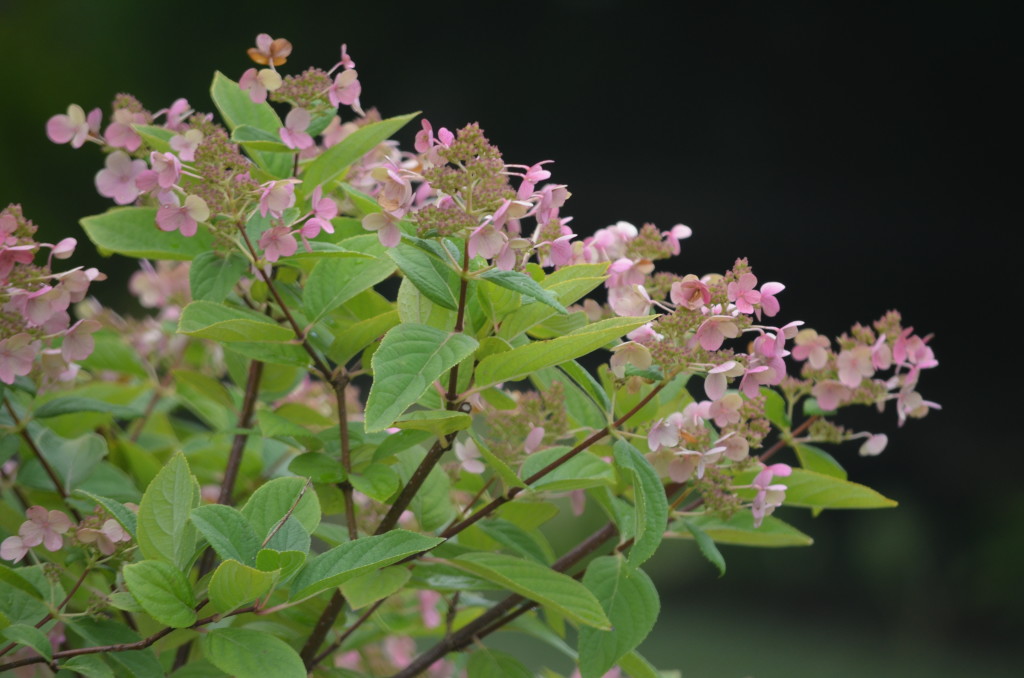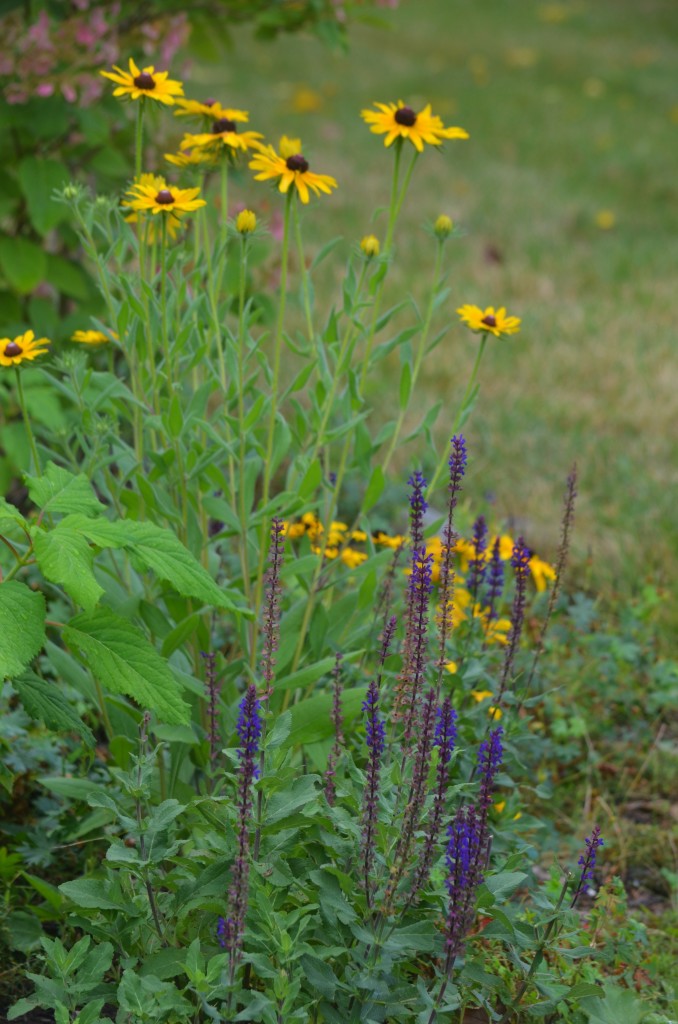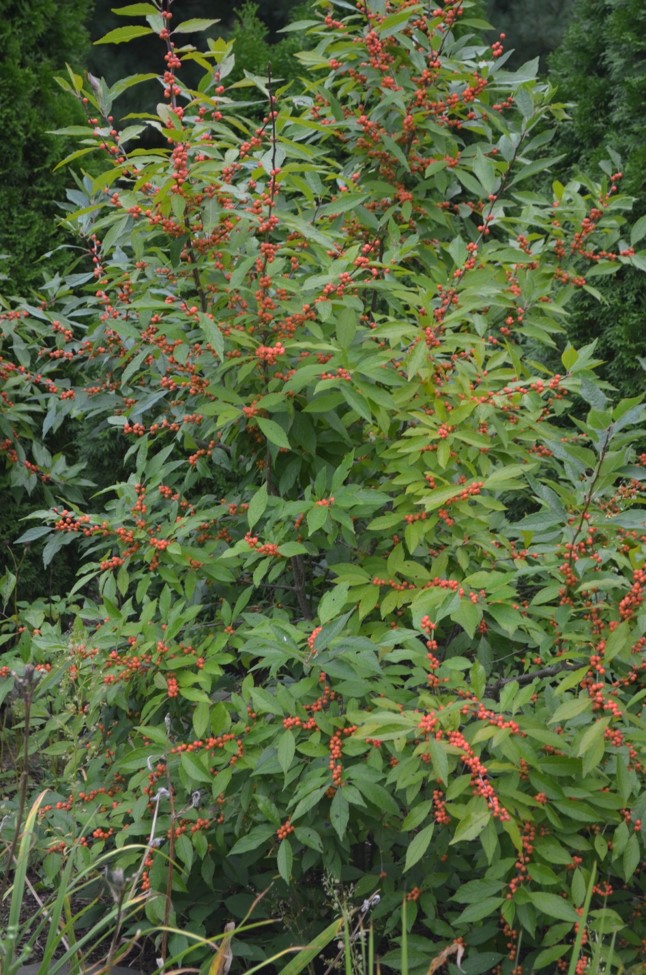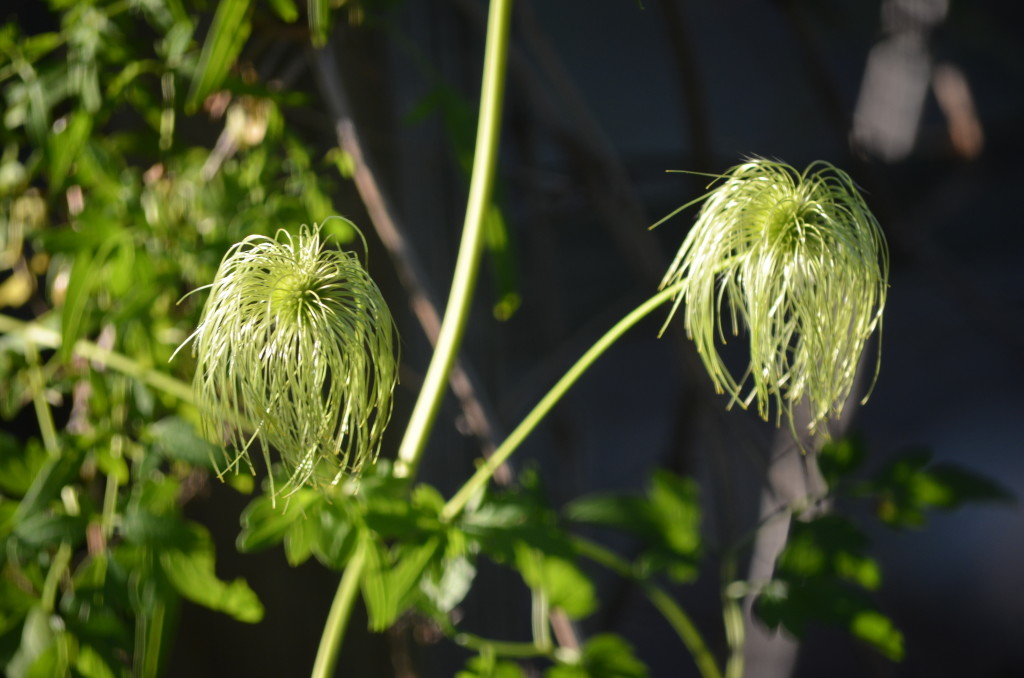This weekend the Garden in the Burrow was open to visitors on the City Spaces Country Places garden tour to benefit Tower Hill Botanic Garden in Boylston ,MA. Every time any gardener has visitors who are also gardeners it s always interesting to see which plants get asked about ,and on consistently there is one that surprises me every tour ; yellow loosestrife or lysimachia punctata.
This plant from the primrose family has been grown as an ornamental since Victorian times and is a very long bloomer. Sometimes called whorled loosestrife because of the arrangement of the strikingly bright yellow flowers, it could just as easily be called the whorled thug, .
My original plants were lysimachia punctata‘ Alexander’ which is delightfully variegated and far less agressive than lysimachia vulgaris (which given good moist soil will take over just about any space very quickly.)
.
The spread of ‘Alexander’ may have been slower, but like many variegated plants they started to revert back to all green ( green=more chlorophyll=stronger growth) and although I tried to keep pulling the green shoots eventually I lost the battle in all but one small space. No matter though because just a few minutes during growing season pulling the growth where it is not wanted is all it needs to keep it in check. Be warned , any root pieces left in the ground will sprout into new plants so if you are trying to eradicate it permanently you work will be much more difficult and take more than one season.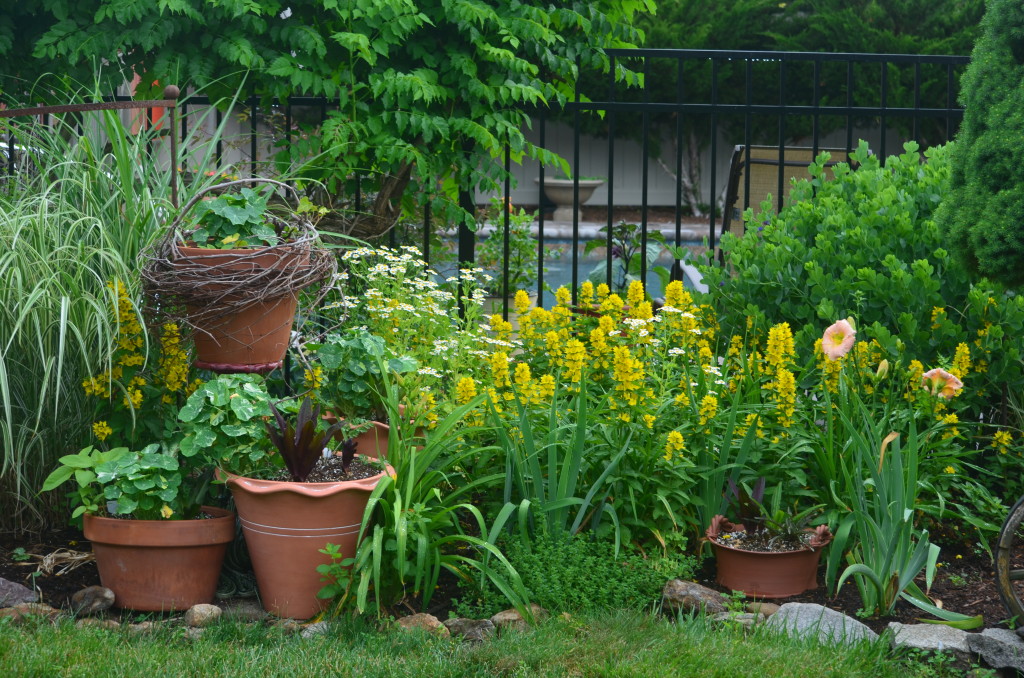
where I let it remain in it’s all green leaved version is in front of a black wrought iron fence where it fills out under my collection of eucomis or pineapple lily grown in pots and several very vibrant daylily varieties. Yellow loosestrife produces no nectar but does offer lots of pollen to bees and flies . This loosestrife joins it’s family member , the purple leaved lysimachia ciliata ‘Firecracker’ which I let spread all over the back 40 as it so easy care, rabbit proof and great for foliage in arrangements( and it gets just as much attention when in bloom).
While i do not recommend adding either of these to small gardens , in mine they serve a purpose and are definitely eye catching. Every tour I get asked numerous times what the plant is , and I always honestly tell people it’s aggressive nature so they are informed before they plant. I am sure it turns many away , but they can always enjoy it here.
The second most asked about plant is a little more uncommon and completely different in just about every way from the lossestrife. It is a plant that has undergone so many name changes i actually don’t know where it ended up finally but I bought it as Centaurea pulchra major and after a few shifts the Beth Chatto Gardens website lists it now as Rhaponticum centauroides
. It is a lovely yet harmless thistle looking plant with gray jagged leaves and the flowers look very artichoke like except they are quite squishy. Every tour when they are in bloom I never fail to see someone standing there curiously squishing them then looking for a label. I know of no nursery that regularly carries this plant , nor a reliable seed source to offer you. This year for the first time I am going to try to save and germinate some because the three I have are not enough.
“Thistle” is a sort of general garden term referring plants that have jagged and often prickly leaves with flowers that have share that unique thistle form we are all too familiar with when we weed. I grow globe thistle ( echinops spcs) and sea holly (erygium spcs) and cardoon (cynara cardunculus) which all have the same sort of leaves and curious thistle- like flowers and I would love to have more “thistles” scattered throughout the garden as a foil to the more typical flower forms. .
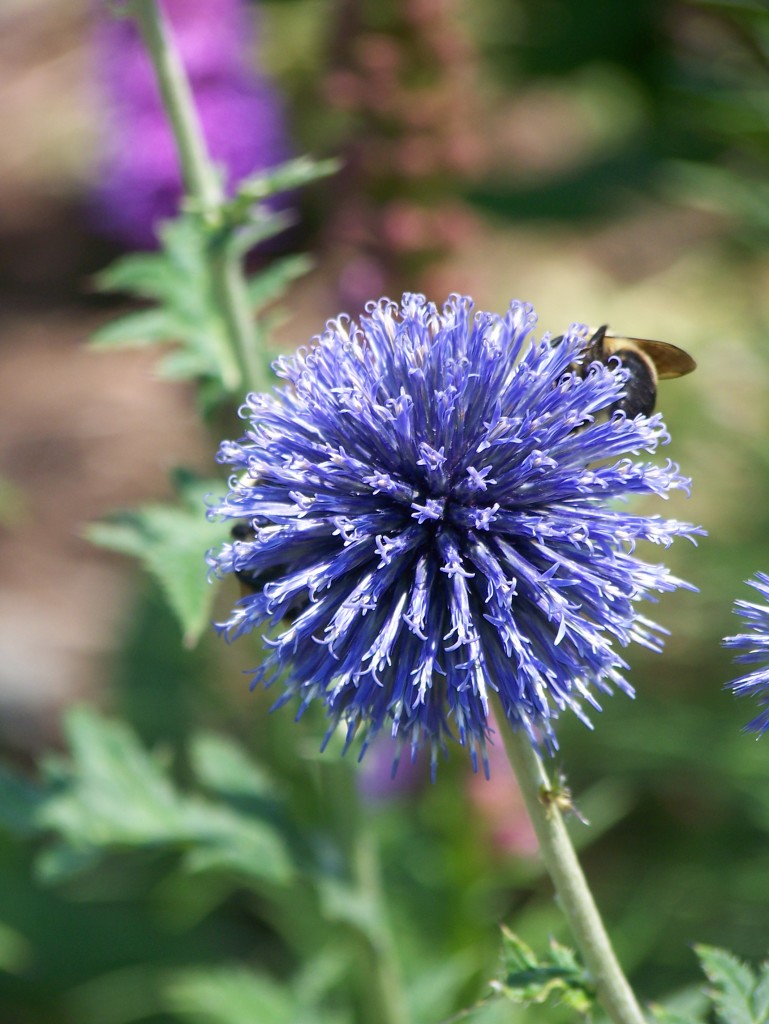 Echinops in particular is a pollinator magnet and I have seen some cool cirsiums featured in Garden’s Illustrated magazine , my brain is spinning with thistle ideas and I think a new Pinterest board keeping track of them all is in order.
Echinops in particular is a pollinator magnet and I have seen some cool cirsiums featured in Garden’s Illustrated magazine , my brain is spinning with thistle ideas and I think a new Pinterest board keeping track of them all is in order.
Back to the tour: we had about 175 visitors who all seemed to enjoy the various garden rooms , the unusual garden ornamentation, and of course the pool.
Curious that very rarely grown plants like the climbing asparagus, the climbing aconitum, the many herbaceous clematis, never get any love. It just goes to show you that if used well any plant can be a show stopper in a garden and common doesn’t have to be boring.
Thanks for all who visited , your support for Tower Hill is appreciated and I hope you left if a little inspriation to take back to your own gardens.
